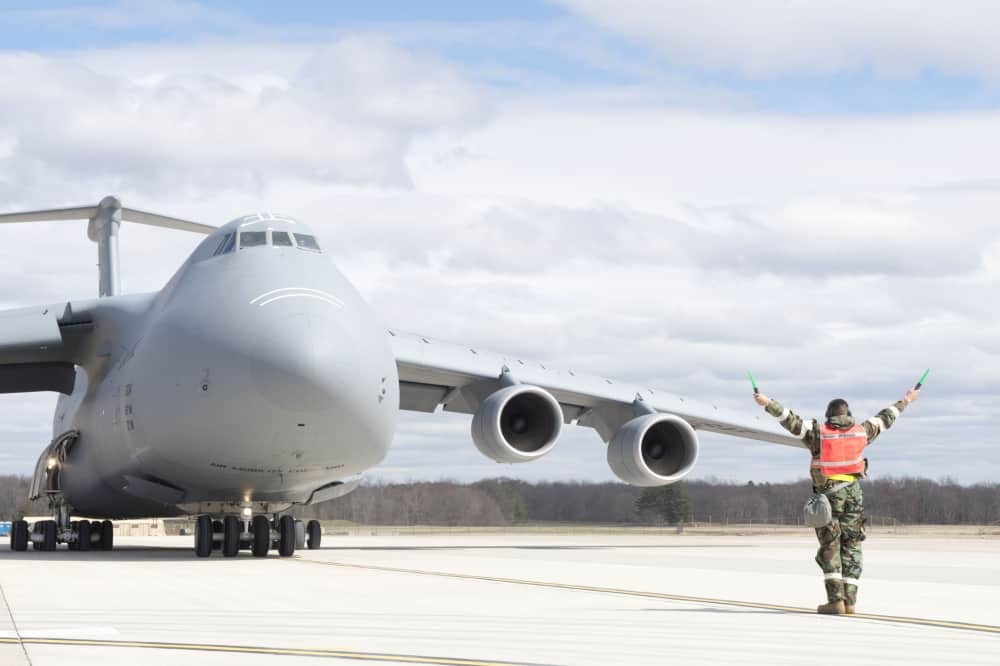
It’s the largest cargo aircraft in the U.S. Air Force fleet – and one of the most fact-laden planes in the world. It’s sheer size and cargo capabilities give it a unique niche in the world of aircraft. Well, niche may not be the best word because niche refers to a small slice of corner of an area – and the C-5 Galaxy is anything but small. Measuring 247 feet long, 222 feet wide and 63 feet tall the C-5 Galaxy is about 25 percent larger than the next biggest aircraft in use by the U.S. Air Force. The C-5 carries almost a half a million pounds of cargo, and weighs 838,000 pounds at its heaviest. Its cargo bay can hold 1.5 Blue Whales (the largest animal on earth). Because the C-5 is so massive, and so important to the Air Force’s mission, it is expected to be around for a long time to come. This means upgrades are continually being made to its three variants (C-5A/B/C). The Galaxy was conceived in the mid-1960s and is expected to last until 2040. Enjoy these awesome facts.
The C-5 Galaxy Is The largest Transport Aircraft In The Air Force.
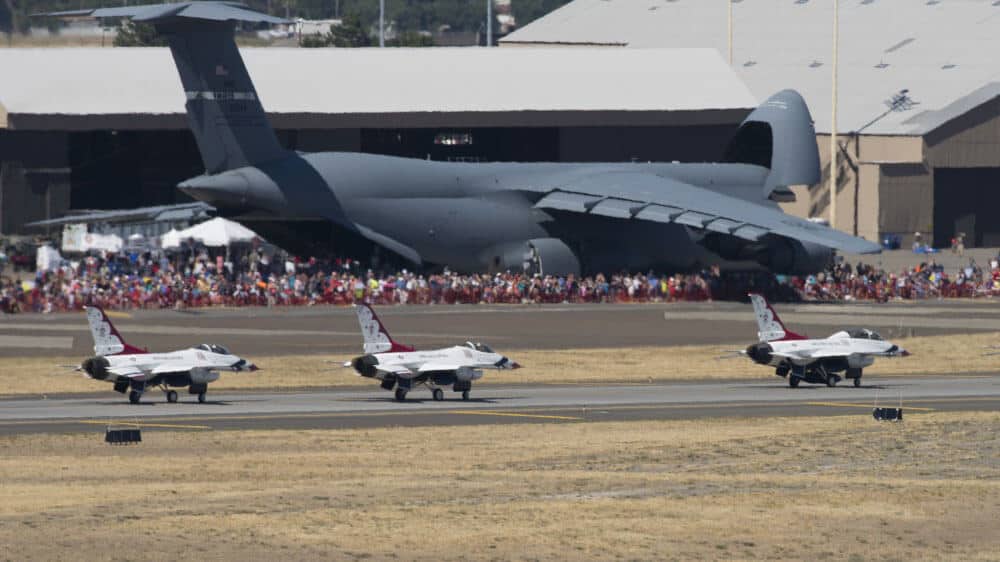
50. What a behemoth! One of the largest military transport aircraft in the world, Lockheed-Martin’s C-5 Galaxy can transport a little less than half a million pounds of cargo and people. It’s one of the only transport aircraft that can move five Apache helicopters in its cargo bay. It’s used for some of the most important missions in the Air Force. There’s a lot to learn about this aircraft and we think you’re going to be shocked by some of these true facts. The C-5 Galaxy is the largest transport aircraft in the Air Force. This flying warehouse can deliver supplies or deploy combat-ready military units anywhere in the world. With record breaking size and half a century of service, the C-5 is easily one of the most interesting military aircraft to ever be produced. Here are some incredible C-5 Galaxy facts. Stick around and see what all the fuss is about, the last few images and facts are sure to surprise you! Enjoy this information and we hope you learn a thing or two.
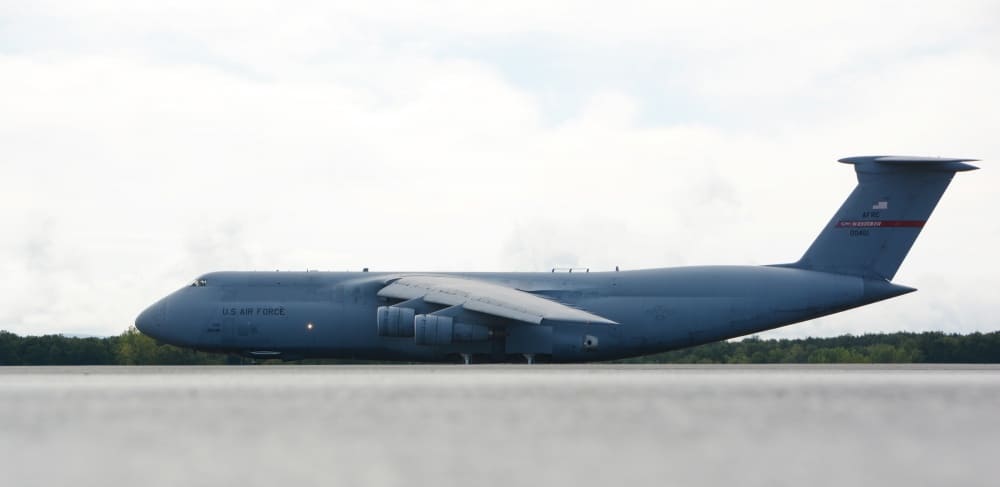
The C-5 Galaxy Requires 2,600 lbs Of Paint

49. The C-5 Galaxy is so large it takes 2,600 lbs. of paint to paint the interior and exterior. Just to give you a reference as to how much paint that is. The average house uses around 250-30 lbs. of paint for the interior and exterior of the house. So that would be equivalent painting almost 10 houses inside and out.
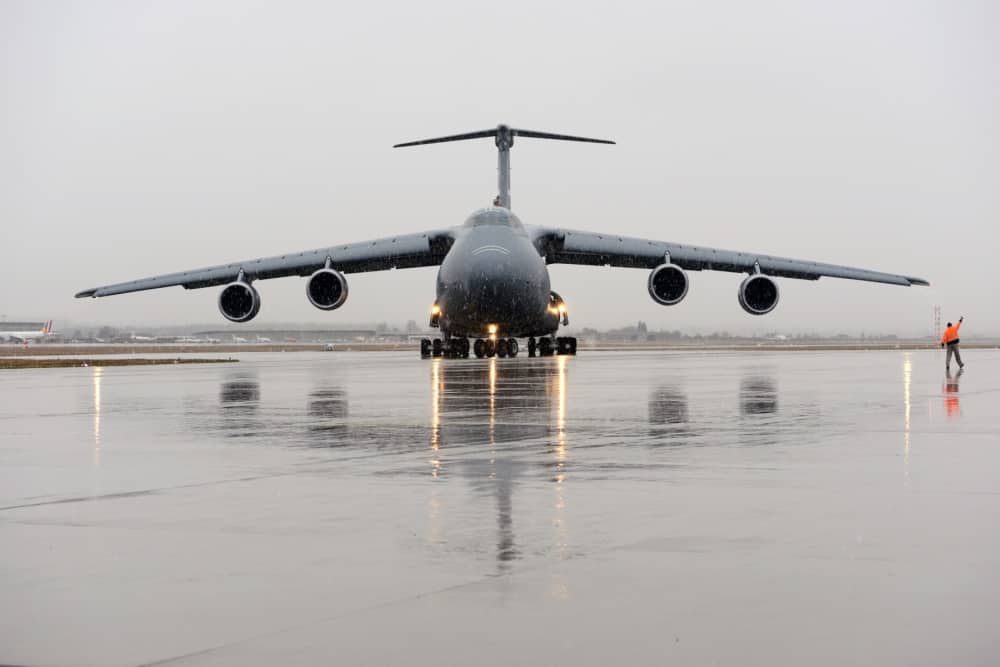
C-5 Galaxy is 247 Feet 10 Inches

48. The total length of the C-5 Galaxy is 247 feet 10 inches. Roughly the length of 7 school buses. That would be almost the same length of a football field. Or almost the size of 2 Olympic sized swimming pools. The C-5 Galaxy is also nearly the size of 3 NBA league sized basketball courts. That is why it can carry soo much cargo.
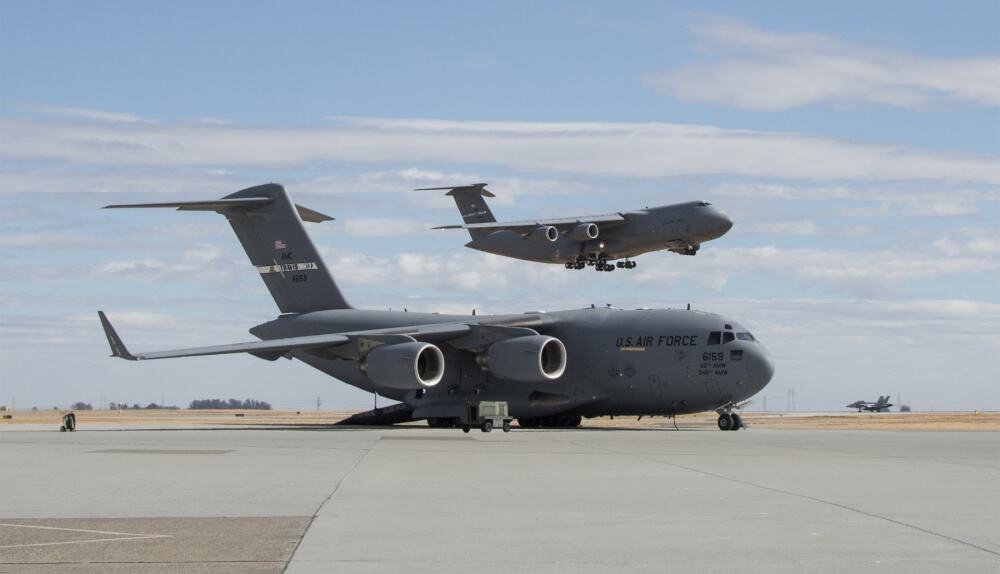
The C-5 Galaxy Has A Wingspan of 222 feet 8 Inches

47. It’s total wingspan is 222 feet 8 inches. that wing span is almost the same length of the aircraft front to back. Part of the reason for such a long wing span is to house all 12 fuel tanks that carry over fifty thousand gallons of fuel. With that much fuel and the large engines, we could see why you would need such large wings.
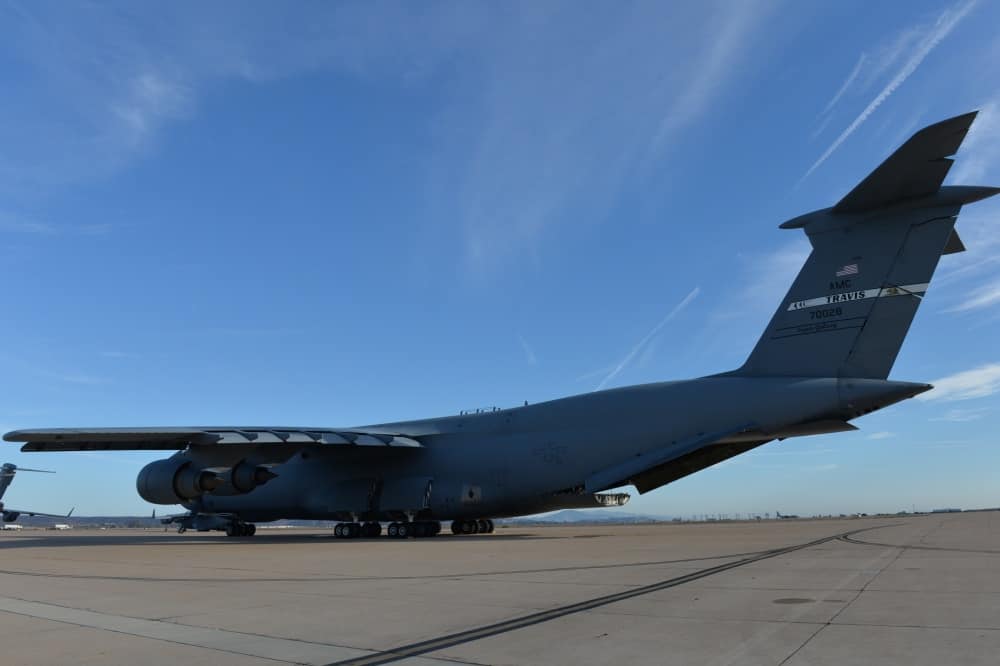
C-5 Galaxy Weighs Over 40,000 lbs.

46. Each wing of the C-5 Galaxy weighs over 40,000 lbs. Part of the reason for this large weight other than its sheer size. Each wing has 6 fuel tanks built into the wings to combine for a total of 12 wing fuel tanks for a total of 51,140 gallons. We are no mathematicians, but that sounds like a lot of weight in fuel.
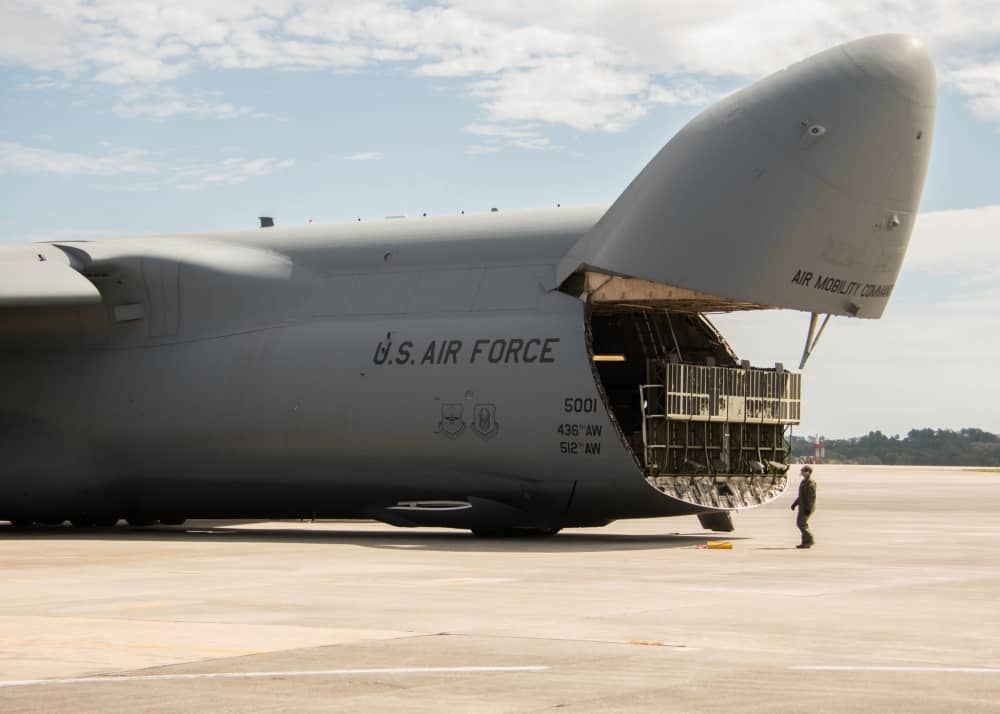
The C-5 Is 63 Feet 2 Inches Tall

45. The C-5 measures a massive 63 feet 2 inches tall. Lets see what else is 63 ft. tall to compare. It would take three and a half Giraffes to get to 63 ft. or three fully grown adult great white sharks from tail to nose. Last but not least, Most adult sperm whales grow between 50 and 65 feet.
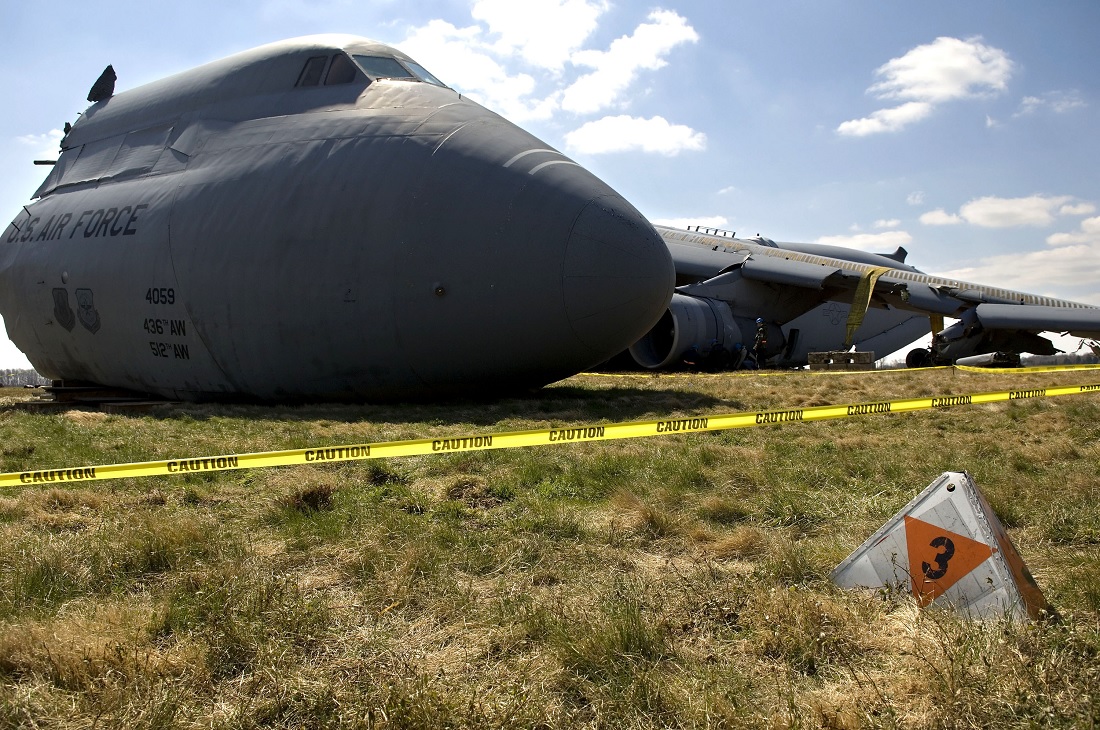
C-5 Can Carry 142 Tons

44. The C-5 can carry 142 tons on 2 decks. The lower deck is for cargo and the upper deck has seating. To give you an idea of how heave 142 tons is. The average one story house weighs roughly 100 tons. The average Space Shuttle fully loaded going into orbit weighs roughly 100 tons. The Orca Whale weighs around 85 tons.
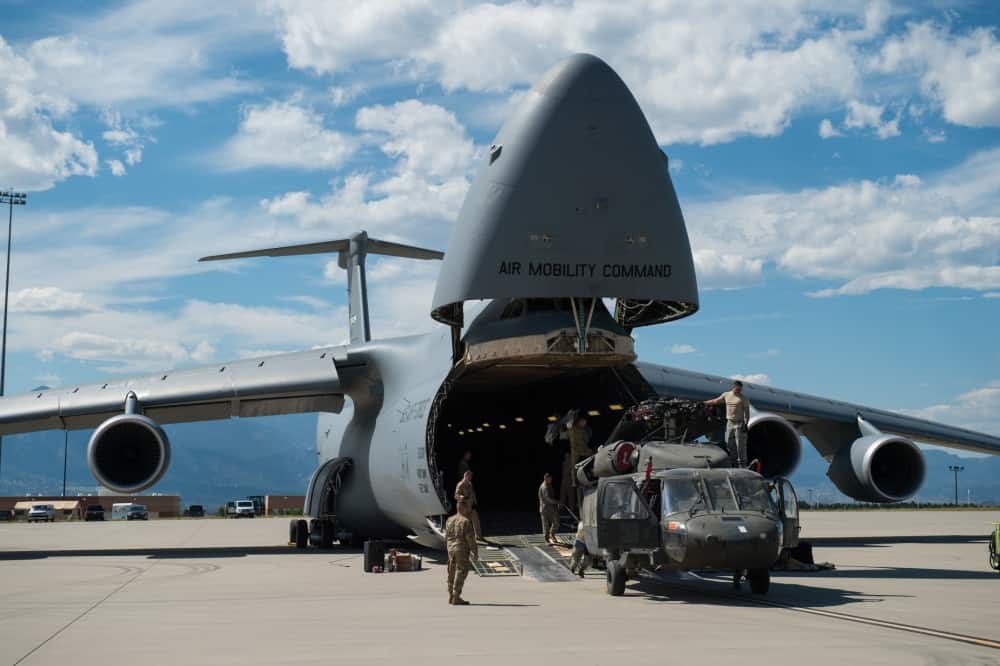
C-5 Galaxy Weighs 375,000 lbs When Empty

43. When empty, Lockheed’s biggest military aircraft weighs 375,000 lbs. that is a little under half of the fully loaded weight that it can handle, which means it can carry more than 100% of its weight. There are not too many vehicles than can accomplish that task. Most vehicles payloads are less than the vehicles weight, which means these engines are extremely strong.
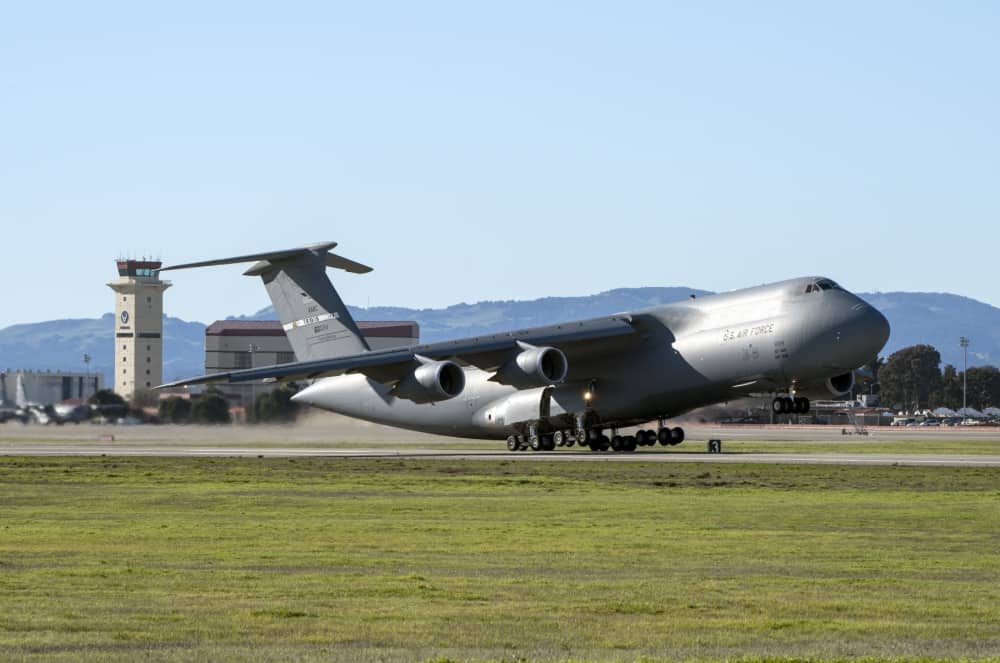
The C-5 Galaxy Weighs 838,000 When Loaded

42. When loaded, the C-5 Galaxy weighs 838,000. Well over double its empty weight. To be able to handle such a large weight rating. It is all thanks to the massive engines. Four General Electric TF39-GE-1C turbofan engines, rated at 41,000 pounds (183kN) of thrust each, mounted on pylons under the wings power the C-5 Galaxy. Now that is impressive.
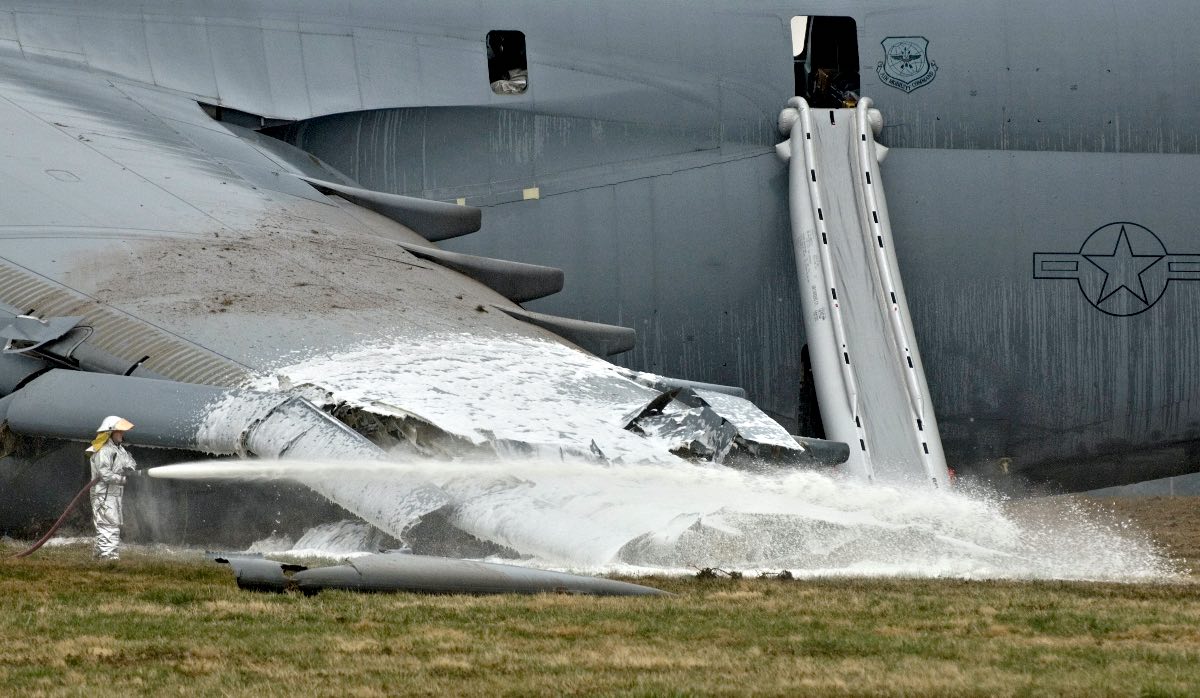
C-5 Has A Maximum Takeoff Weight Of 769,000 lbs

41. It’s maximum takeoff weight is 769,000 lbs. but 840,000 lbs. during wartime. Just to give you an idea of how much weight that is. It would be equivalent to 2 Antarctic Blue whales, which are the largest animals on the planet. Another animal more widely known is the Elephant. The C-5 would be similar to the same weight of 65 Elephants.

C-5 Requires 8,300 Feet Of Runway

40. When fully loaded the C-5 requires 8,300 feet of runway for takeoff and 4,900 feet for landing. Most airport runways are between 8,000 ft. and 13,000 ft. With that being said some airports can’t handle the needs of the C-5 Galaxy unless it is unloaded. Which is also part of the reason they have such large fuel tanks, to make sure they can get to an airport that can handle the needs of the C-5.
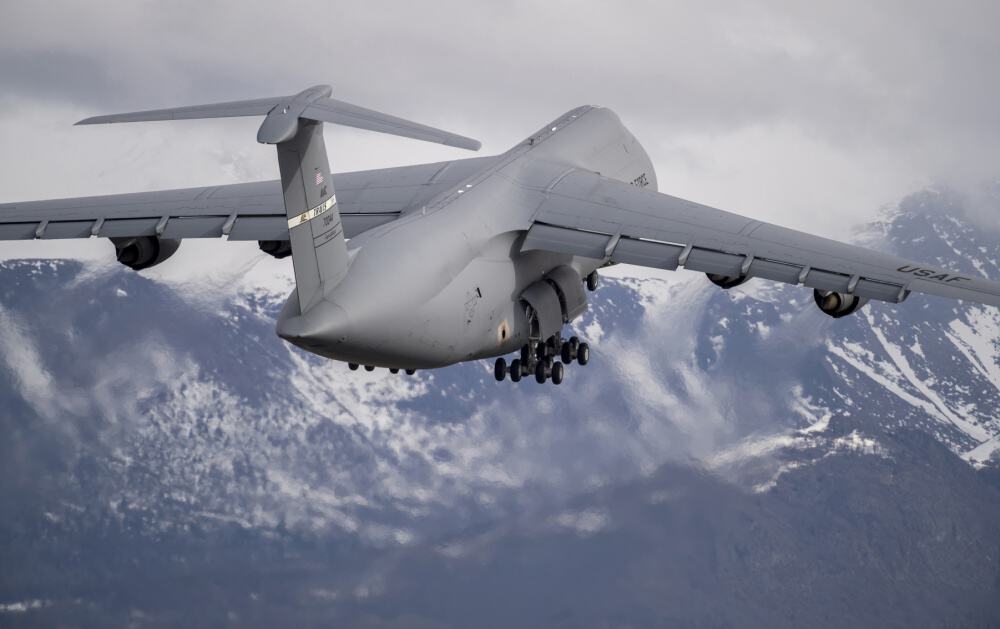
C-5 Can Go 601 Miles Per Hour

39. The maximum speed of the C-5 is 601 miles per hour and a cruising speed of 586. Most commercial aircraft fly between 460 miles per hour and 575 miles per hour. So with the C-5 Galaxy having a cruising speed of 586 miles per hour. That should be plenty of speed to get any cargo wherever it needs to go on time.
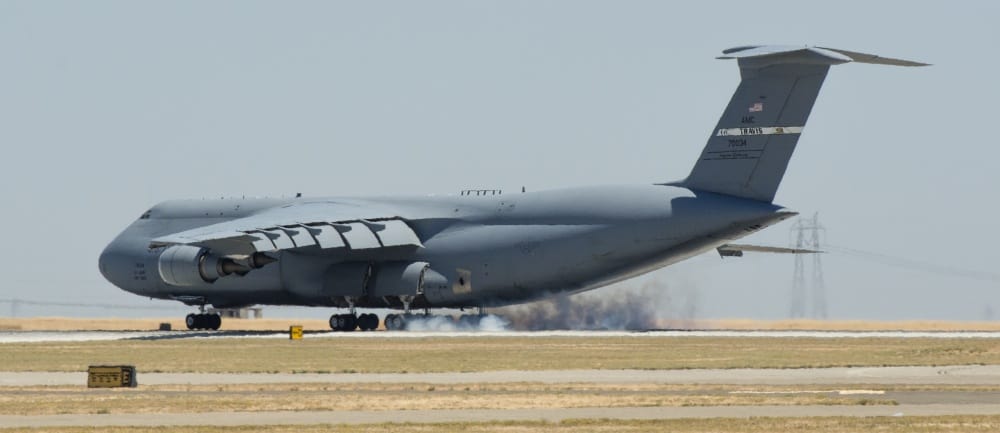
Flight Service Ceiling

38. The C-5 can fly at a height of 34,000 feet. Also known as its service ceiling. That may not sound all that high, but most commercial airliners fly between 31,000 to 38,000 feet due to this being a safe altitude for them. If they flew higher than it would take longer to get back to a safe altitude in case of any emergencies.
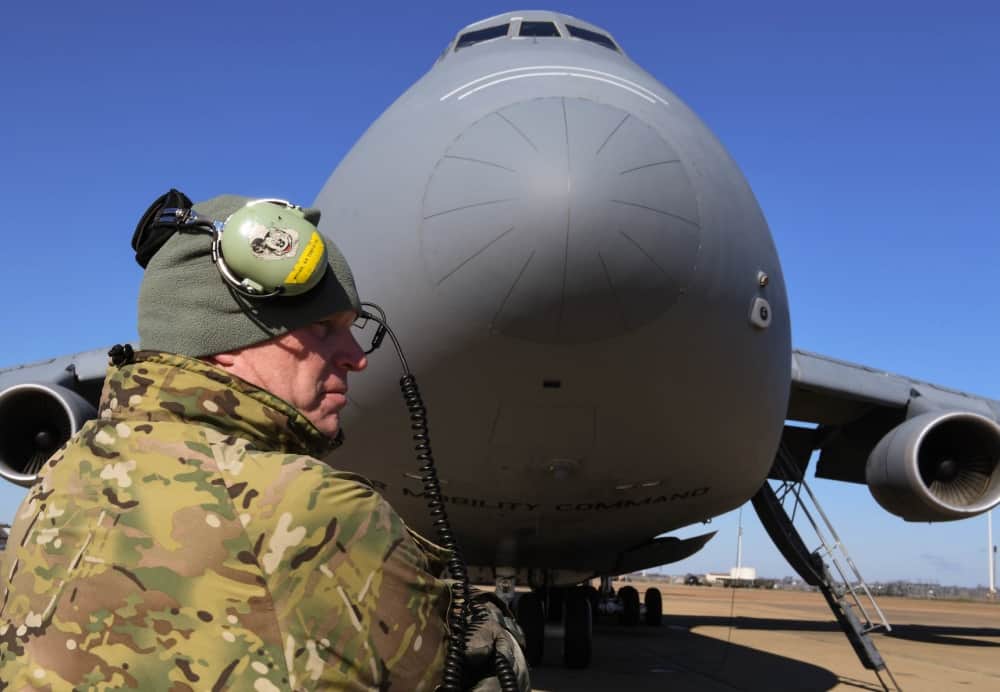
C-5 Can Fly At A Height Of 34,000 feet.

37. The Galaxy’s fuel capacity is 51,140 gallons, equal to the volume of an average five-room house. That is a lot of fuel and we would hate to see that fuel bill. No wander these massive heavy aircrafts can still fly for such a long distance. With that size fuel capacity it must take multiple fuelers to fill it in a reasonable time.
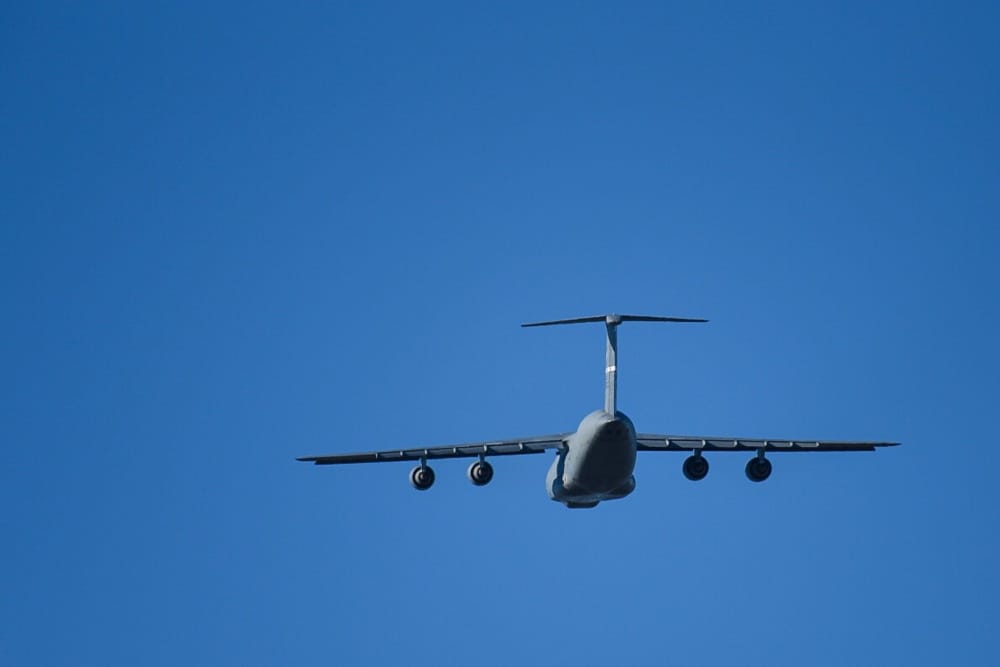
C-5 Galaxy Carries A Lot Of Fuel

36. The C-5 carries enough fuel for the average American car to make 31 trips around the world. The fuel tanks on the C-5 Galaxy are soo massive in order to fill up all of it’s tanks would be equivalent to the same fuel that the average gas station sells in 2 weeks. Think about that next time you go to the gas station.
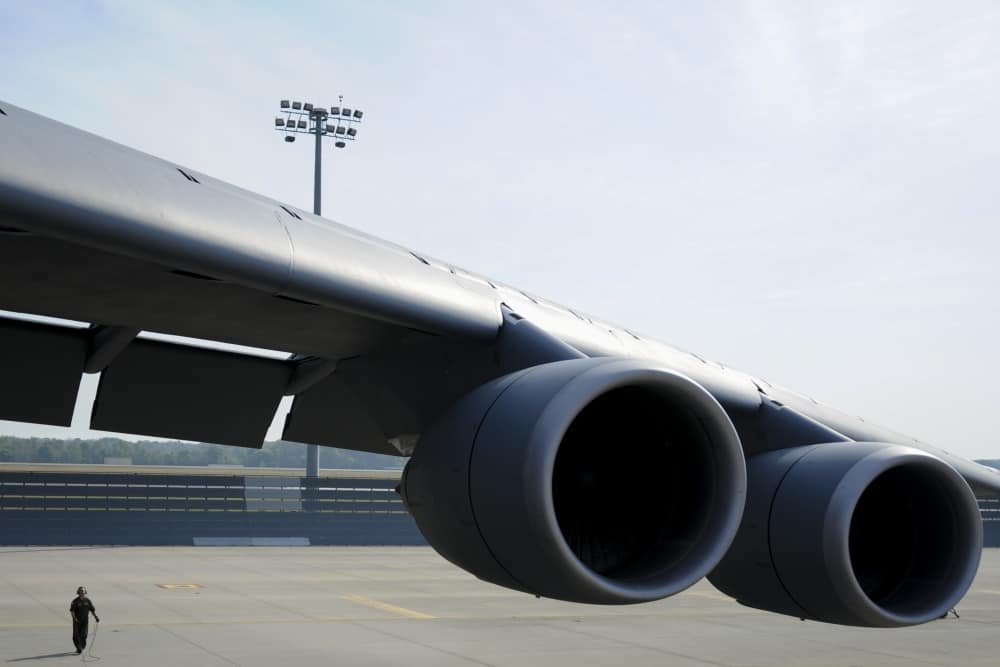
C-5 Has A Range Of 3,700 miles

35. The C-5 Galaxy has a range of 3,700 miles. Just to give a reference. For you to drive the entire length of the U.S. in a vehicle would take 3,431 miles of roadway. If you took a straight line to the furthest points of the U.S. it would be around 2.800 miles. So this massive aircraft can clearly travel anywhere it wants to go with no problem.
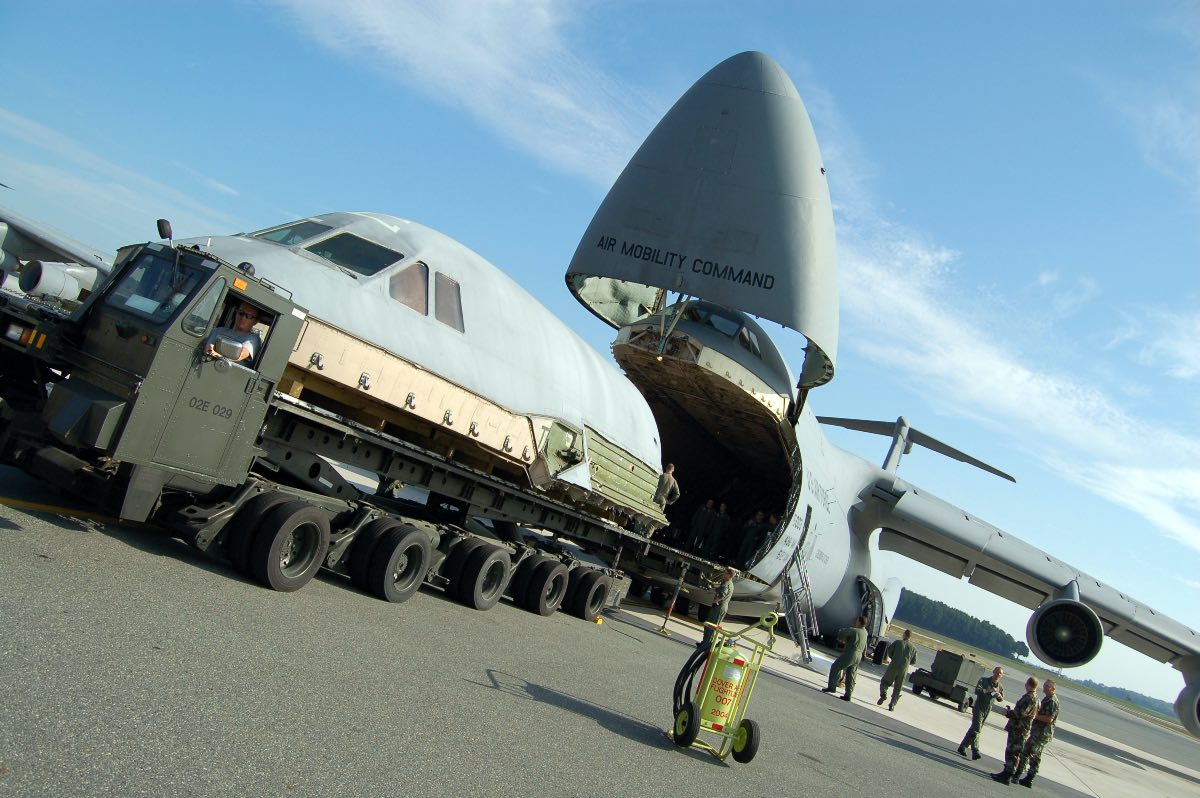
C-5 Galaxy Has 4 Turbofan Engines

34. To power the Galaxy, each has 4 turbofan engines that measure 7 feet across. The average truck is between 65′ to 74″. With that being said you could almost fit the width of an average truck inside each of these turboprop engines. That is massive and explains why they produce enough power to lift this heavy aircraft off the ground.
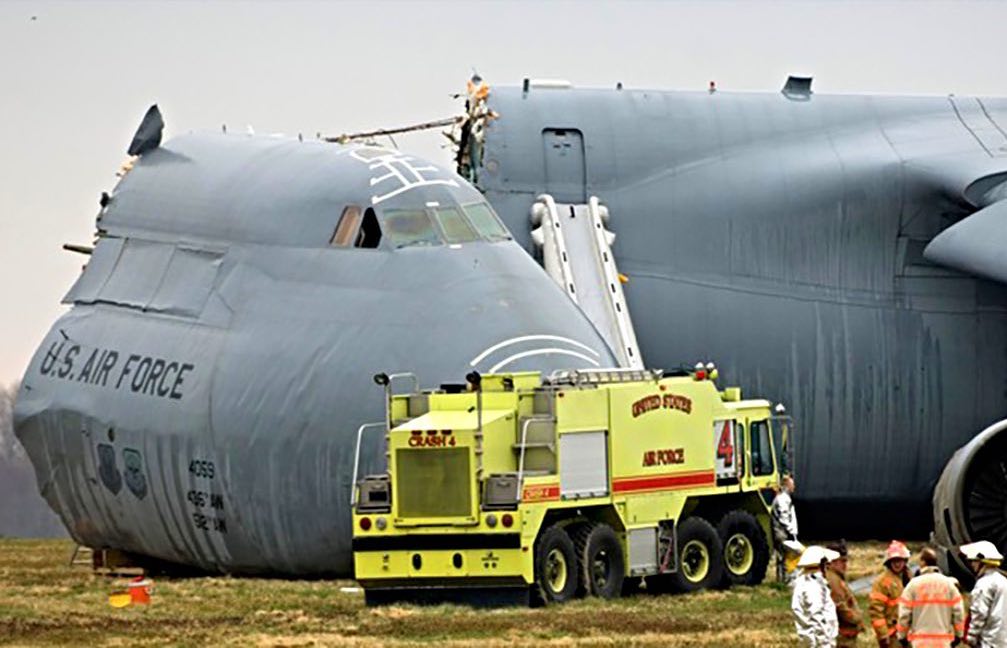
The C-5 Engines Produce A Lot Of Power

33. The C-5 engines produce power equal to 800 average cars. In this photo, Dover Airmen load the flight deck from the April 3 C-5 mishap onto another Dover C-5 for transport to Robins Air Force Base, Ga., Aug. 22. The flight deck will be used to as a training simulator to help prevent future C-5 mishaps and ensure the crews safety.
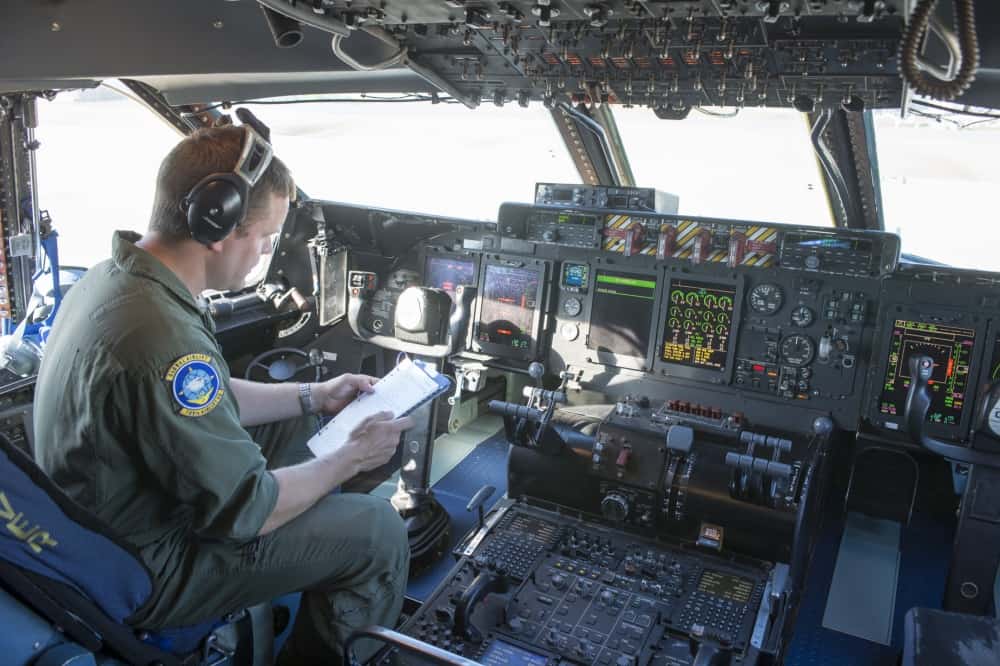
C-5 Galaxy Uses 42 Tons Of Air Per Minute

32. Each C-5 Galaxy engine consumes roughly 42 tons of air per minute. Just to put this into perspective. The average house can handle roughly 4 tons of air per hour. So with that calculation Each engine on the C-5 Galaxy consumes about the same amount of air as 630 Average Size Houses. Which means all four engines would consume together the same as 2,520 houses.
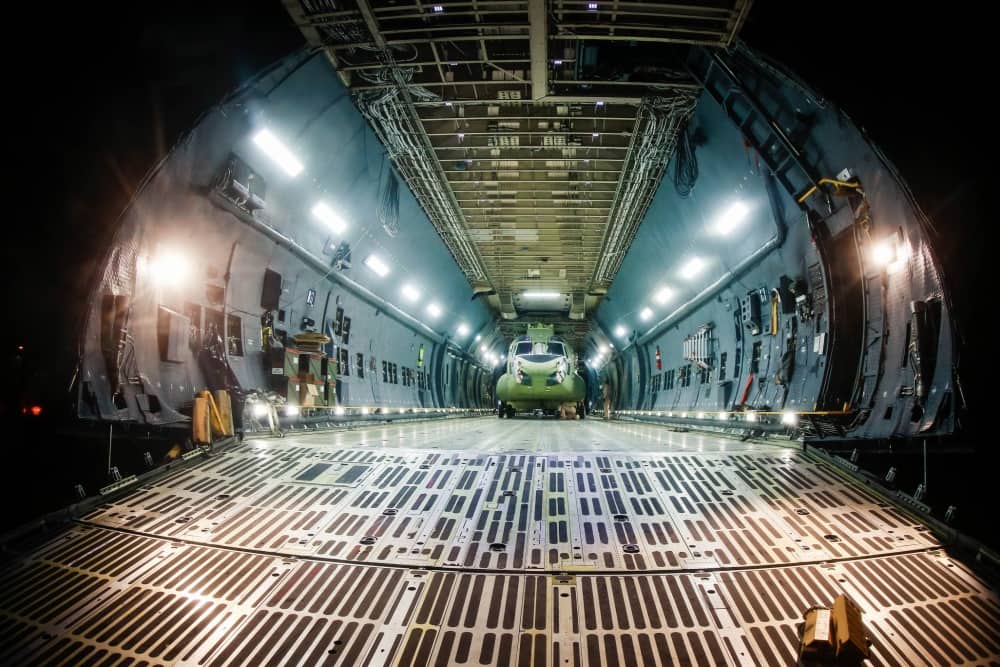
C-5 Requires 100 Miles Of Wiring

31. C-5 systems require more than 100 miles of wiring and 5 miles of control cables. Just to give you an idea of how much that really is. The average car has around 5,000 feet of wire. With that being said the C-5 has enough wire in it to complete the wiring for 105 average sized cars. Now that is impressive for that electronics team.
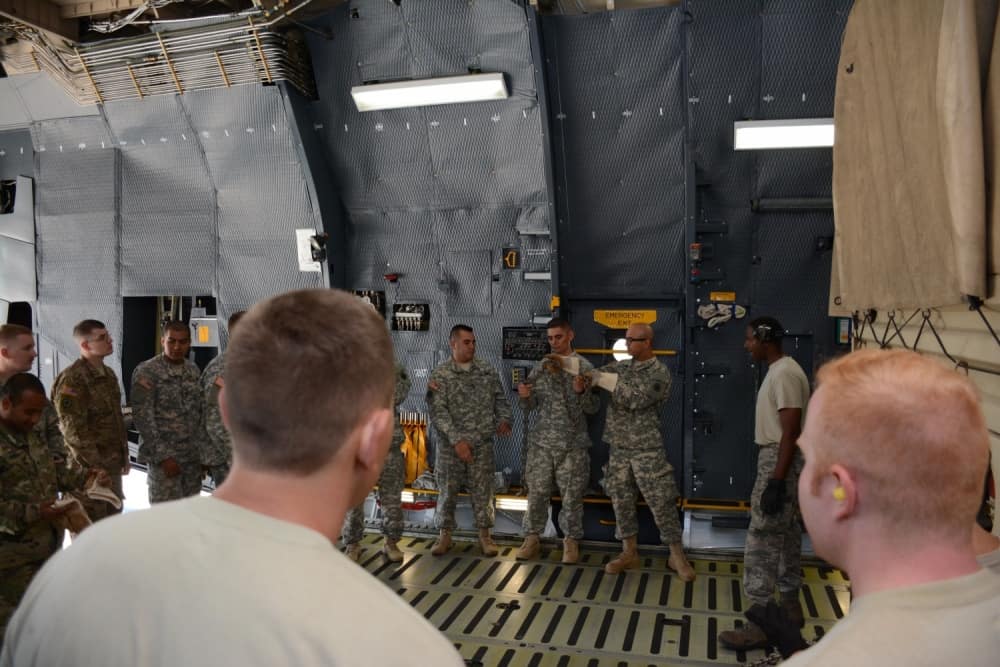
C-5 Has About 1,658,800 Fasteners

30. The C-5 has roughly 1,658,800 fasteners.
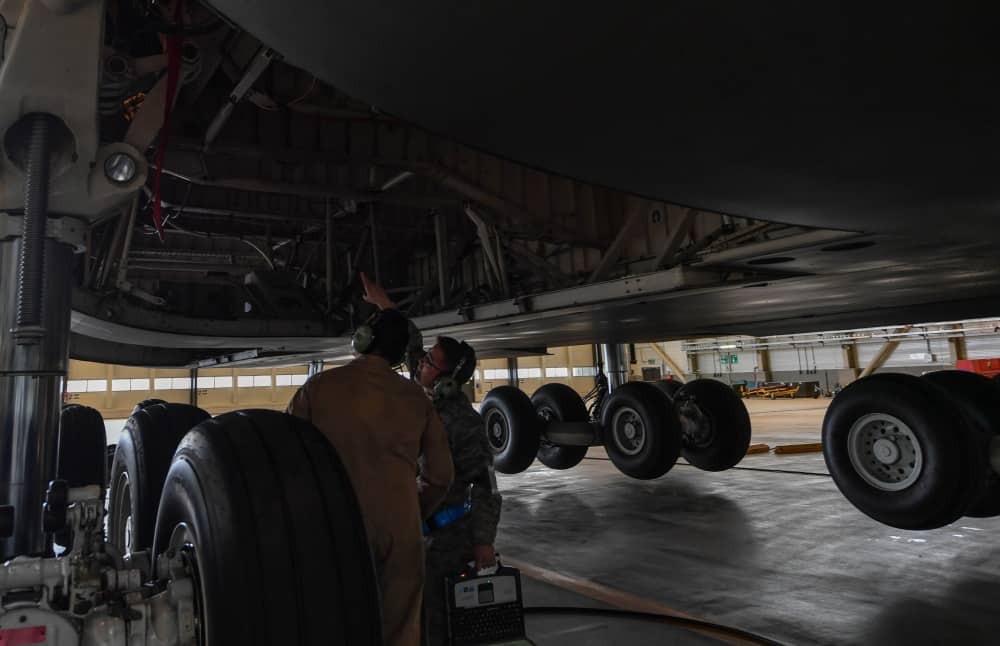
C-5 Has A 24 Ton Cooling Capacity

29. The C-5 has a 24 ton cooling capacity which is enough to air condition eight average sized homes.
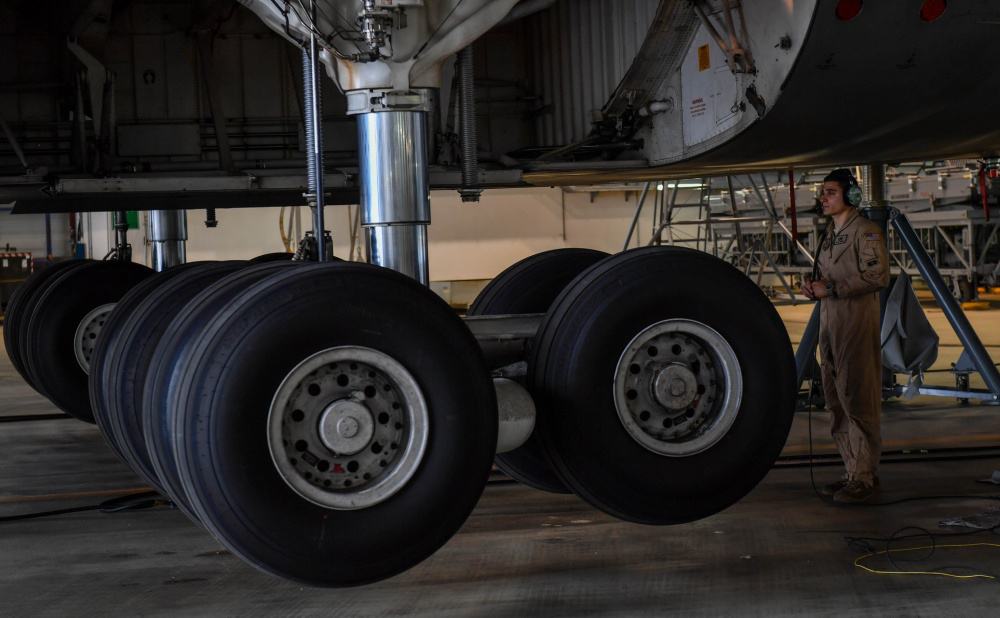
C-5 Galaxy Has 28 Wheels

28. The C-5 Galaxy has 28 wheels. 4 in the front and 24 under the wings.
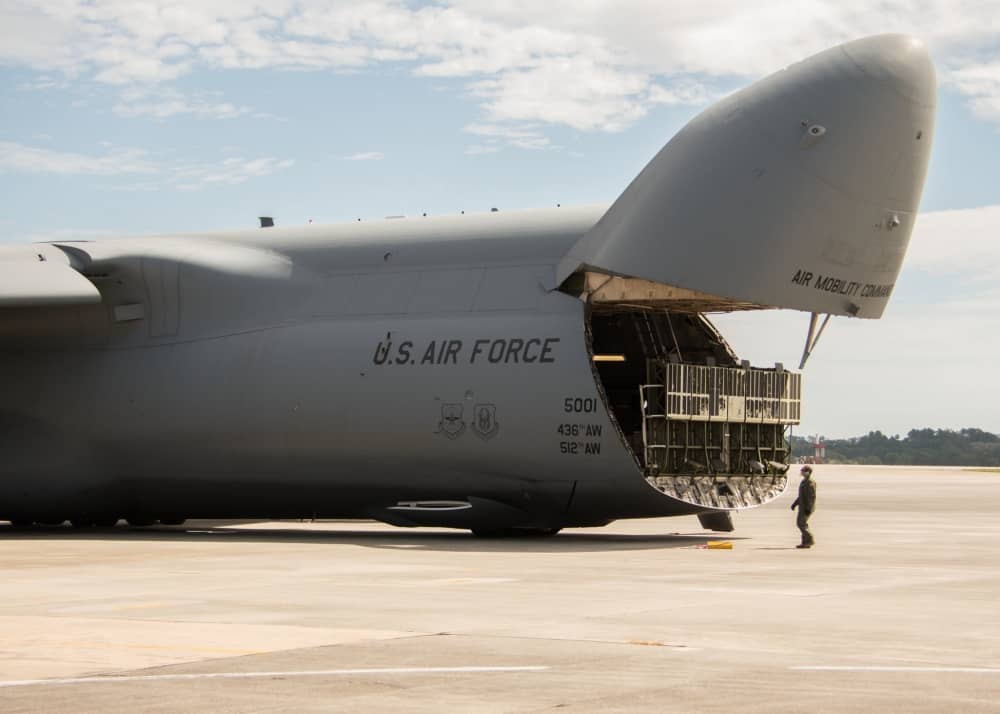
C-5 Weighs An Average Of 150.5 Pounds.

27. A singe tire on the C-5 weighs an average of 150.5 pounds. All 28 tires combine to weigh an astounding 4,214 pounds!

C-5 Loads Through The Nose

26. For cargo the C-5 loads through the nose versus through the back.
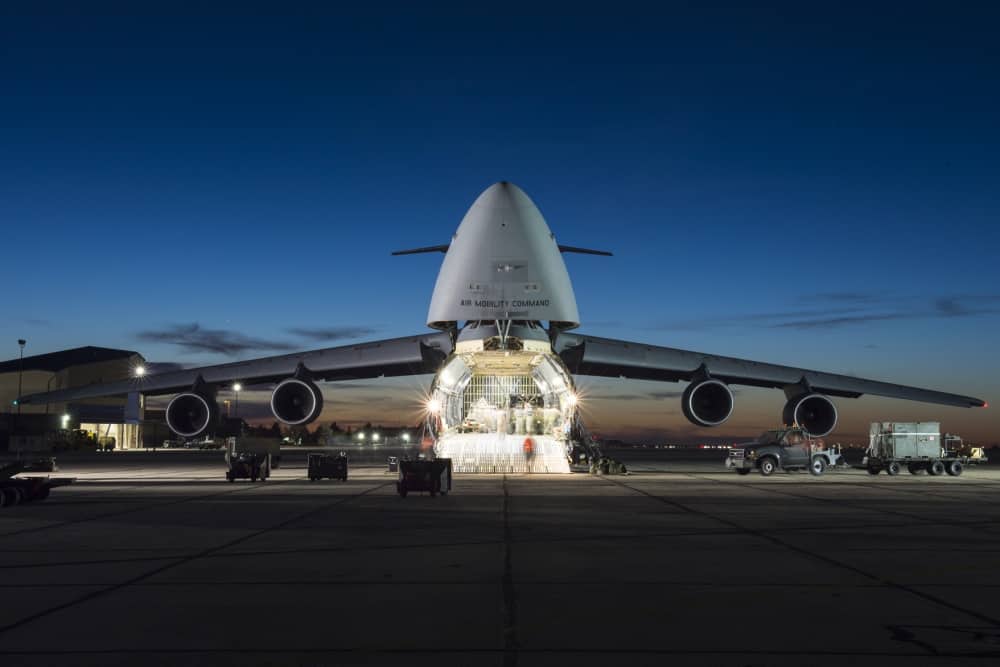
C-5 Cargo Floor Is Long

25. The length of the C-5 cargo floor is longer than the length of the Wright brothers first historic flight.
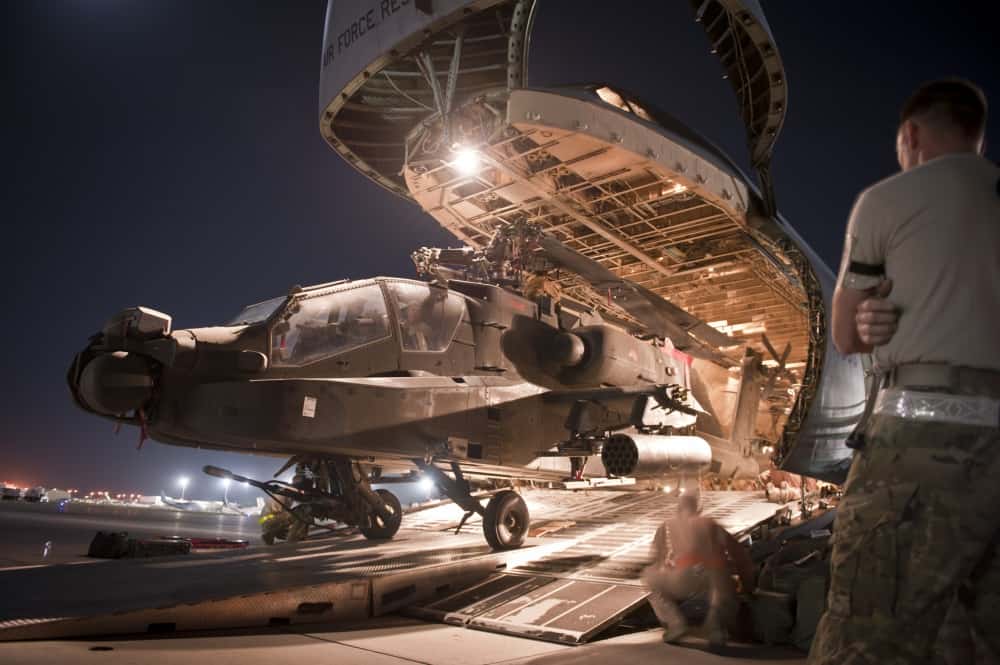
The Cargo Floor Can Hold 6 Standard Greyhound Buses

24. The C-5’s cargo compartment will hold 6 standard Greyhound buses or 100 Volkswagen Beetles.
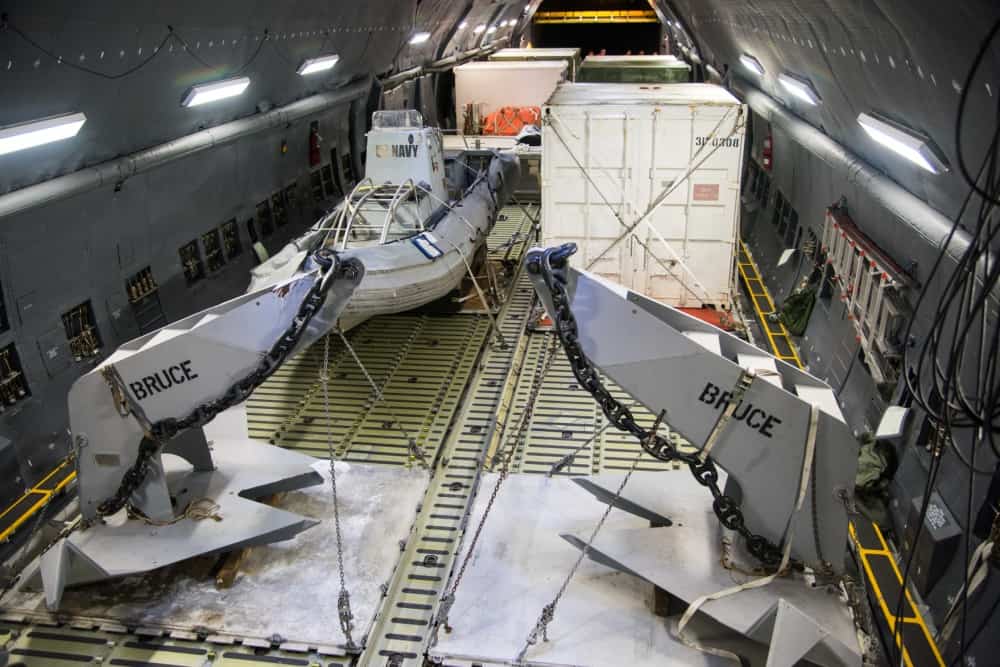
C-5 Galaxy Can Hold A lot

23. It’s large enough to carry 5 Apache helicopters.
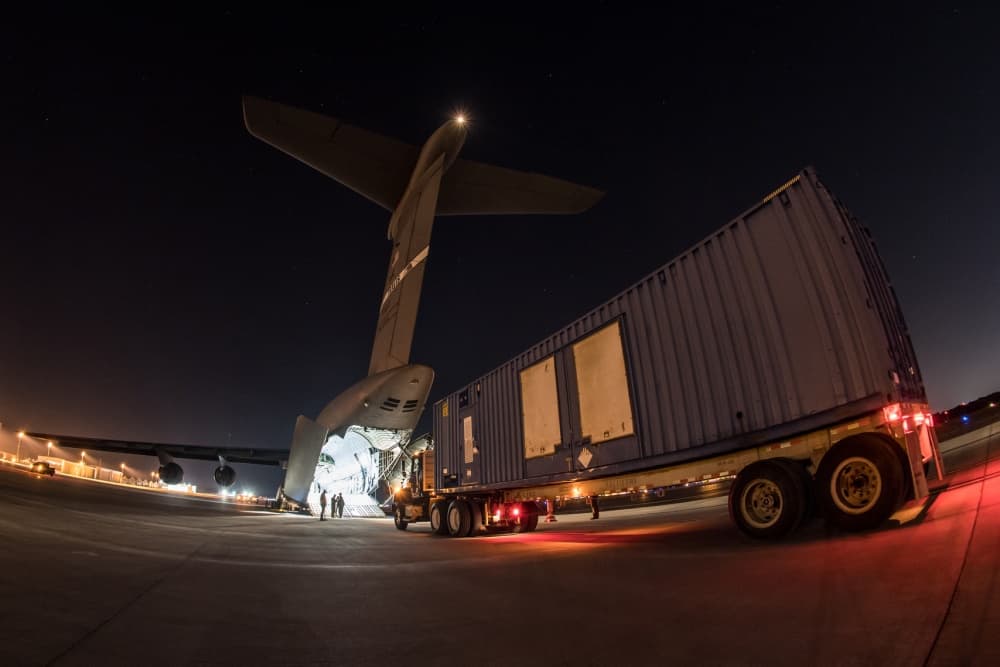
The C-5 Can Hold A Bowling Alley

22. The C-5’s cargo compartment is big enough to hold an eight-lane bowling alley.
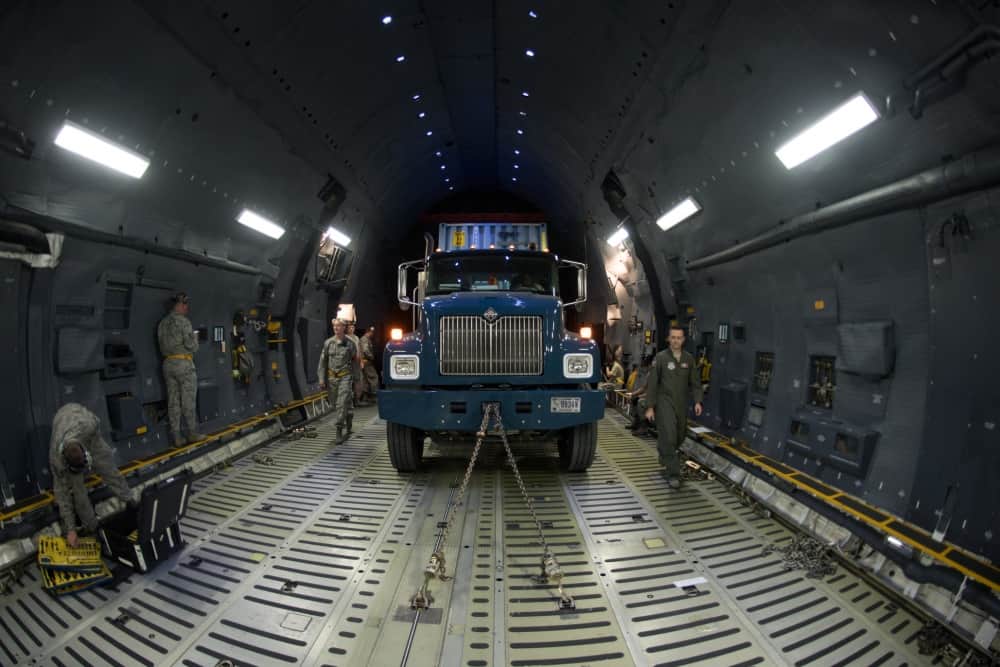
C-5 Galaxy Can Hold 26,000,000 Ping Pong Balls

21. To fill the C-5 it would take about 26,000,000 ping pong balls.
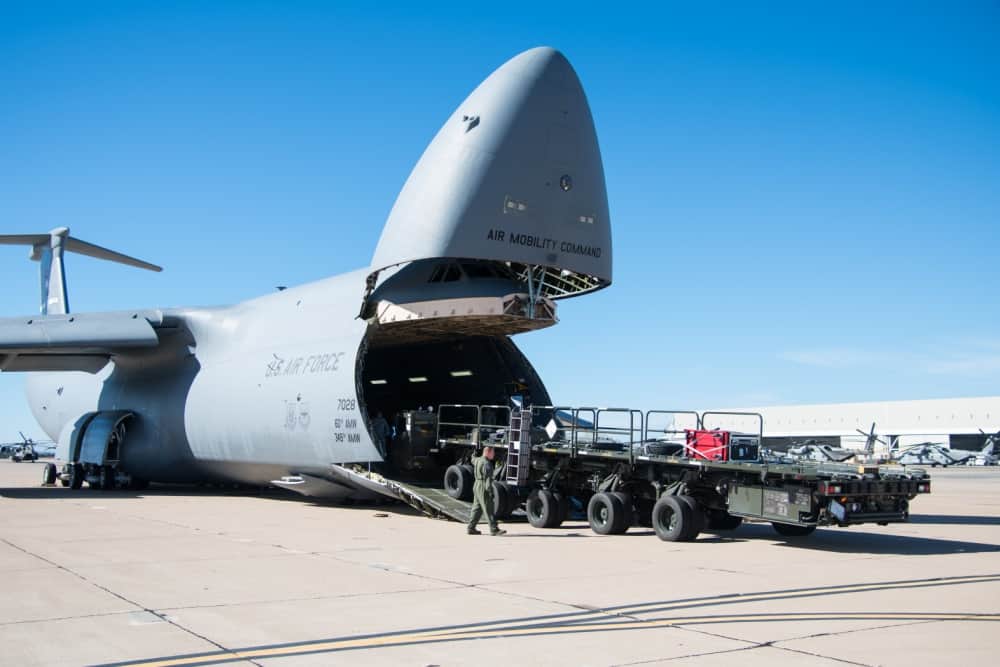
C-5 Can Hold The Equivalent 328,000,000 Aspirin

20. You could fit 328,000,000 aspirin tablets inside the C-5.
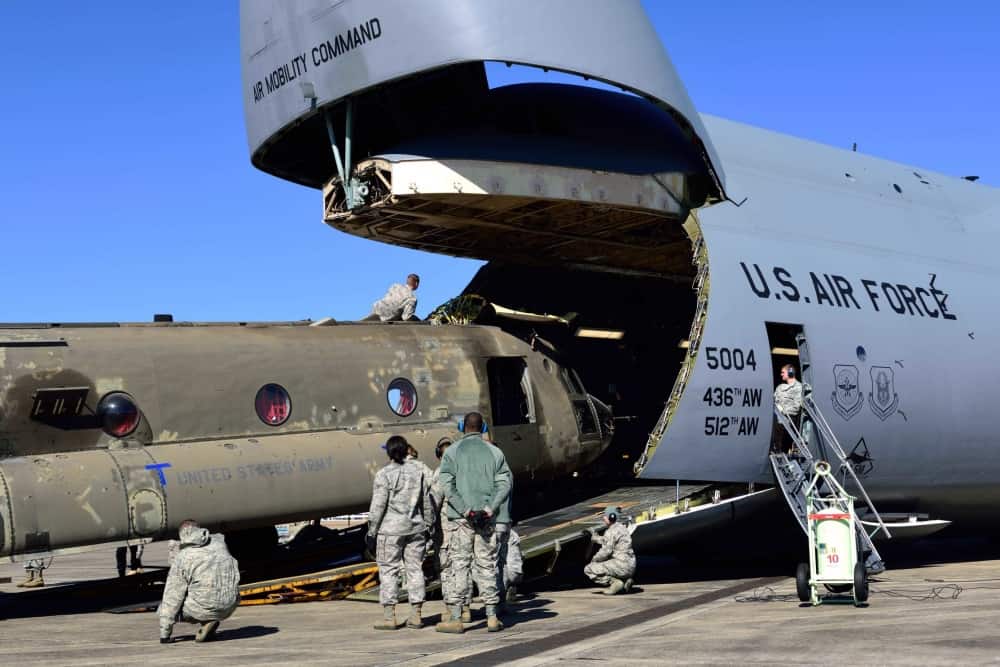
C-5 Can Carry Over 3,200,000 Tortillas.

19. If you’re hungry the C-5 can carry over 3,200,000 tortillas.
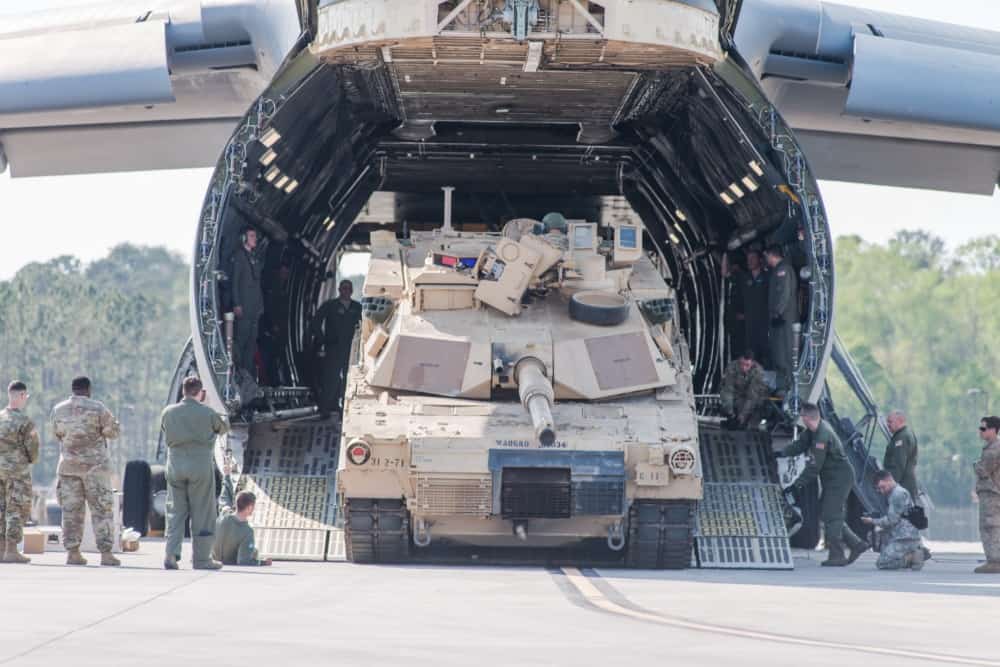
A Helicopter Can Fit In The C-5 Galaxy

18. An entire Chinook transport helicopter can fit inside a C-5.
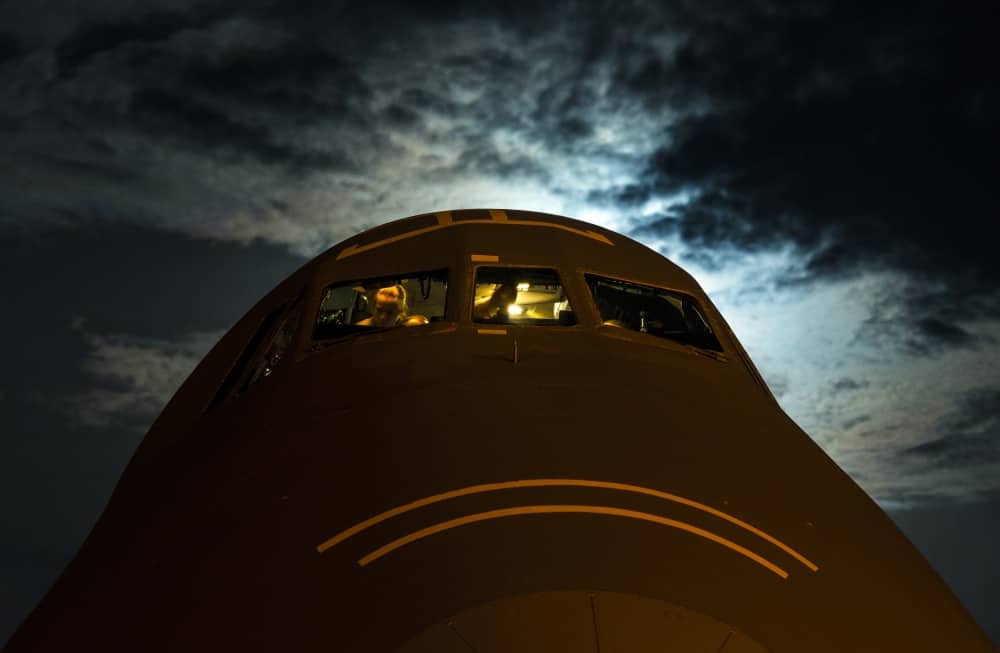
C-5 Galaxy Can Fit Two M1 Abrams

17. You can fit two M1 Abrams main battle tanks in the C-5. Each weighs 67 tons.
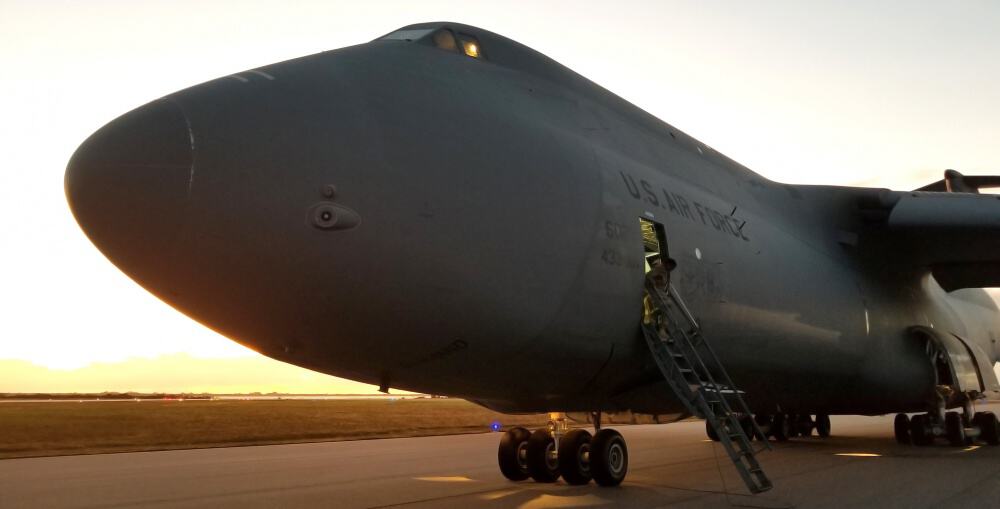
NASA Wanted The C-5 Galaxy To Transport A Space Shuttle

16. In the 1970s NASA considered using the C-5 to transport the Space Shuttle to Kennedy Space Center but they went with the Boeing 747 because of its low-wing design.
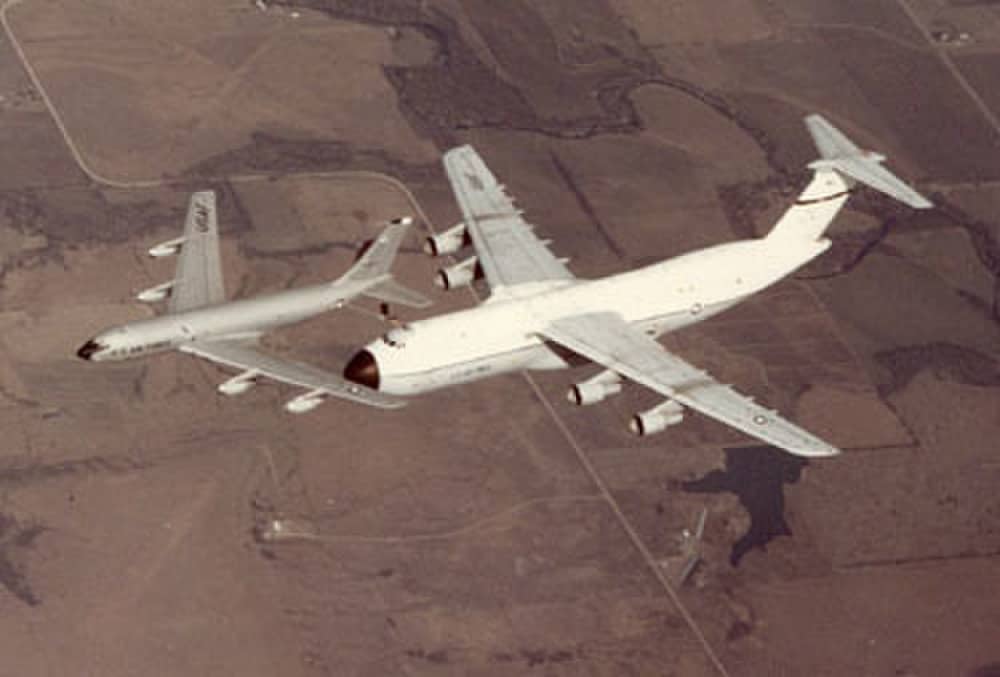
C-5 Has A Few Nicknames

15. The C-5 goes by a few nicknames. F.R.E.D., Linda Lovelace, Fat Albert and Lockheed Hilton.
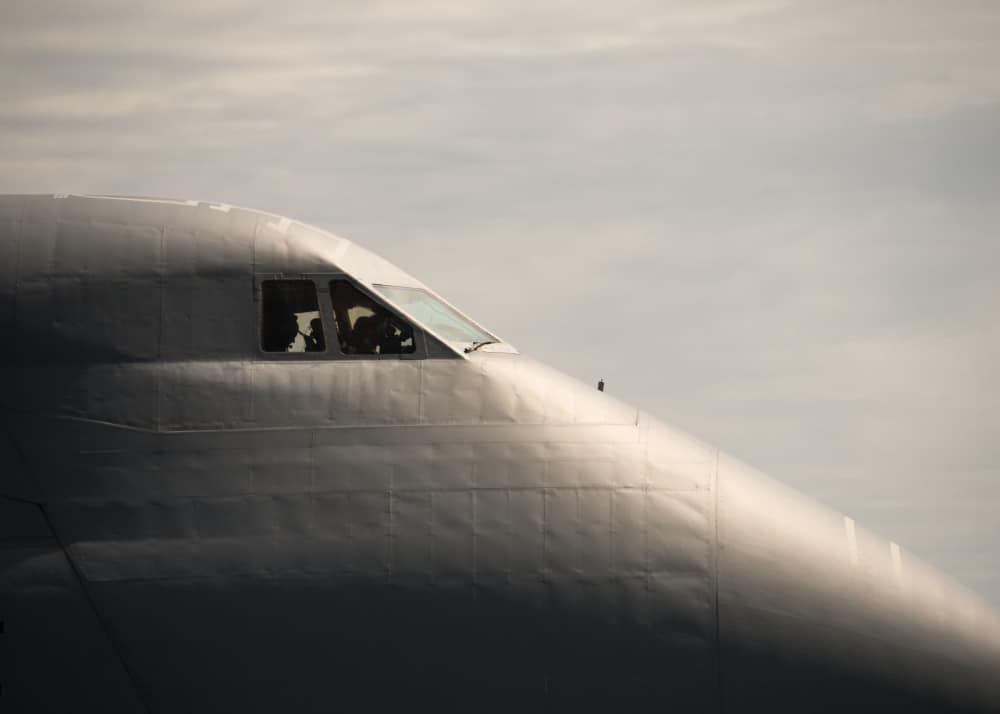
The USAF Has Used C-5s For A Long Time

14. The USAF has operated the C-5 since 1969. A half a century.
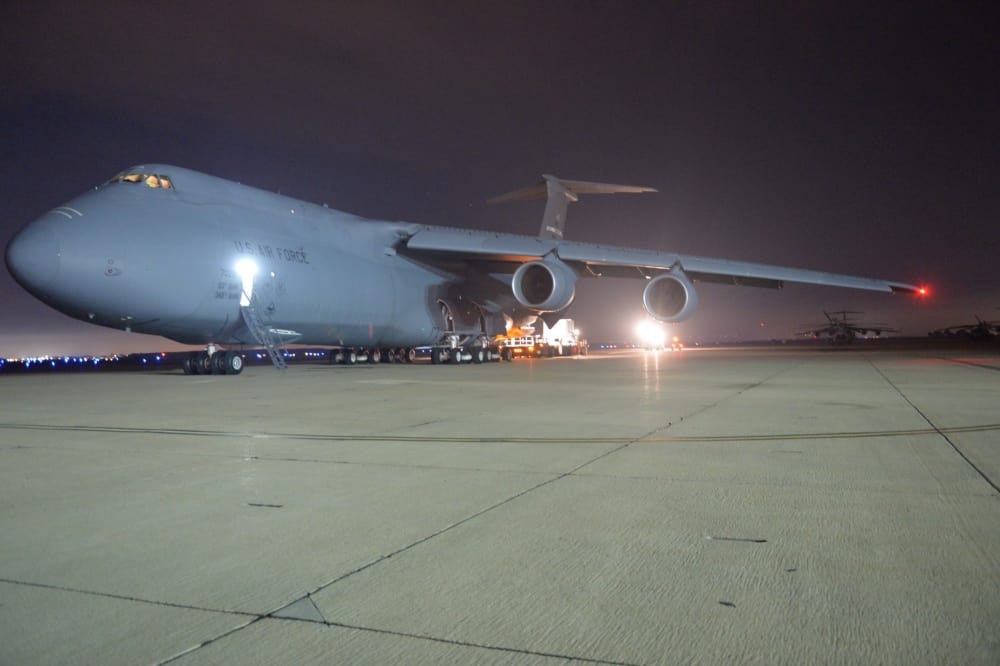
C-5 Ran Into Financial Issues

13. The C-5 Galaxy’s development was complicated and Lockheed suffered significant financial difficulties.
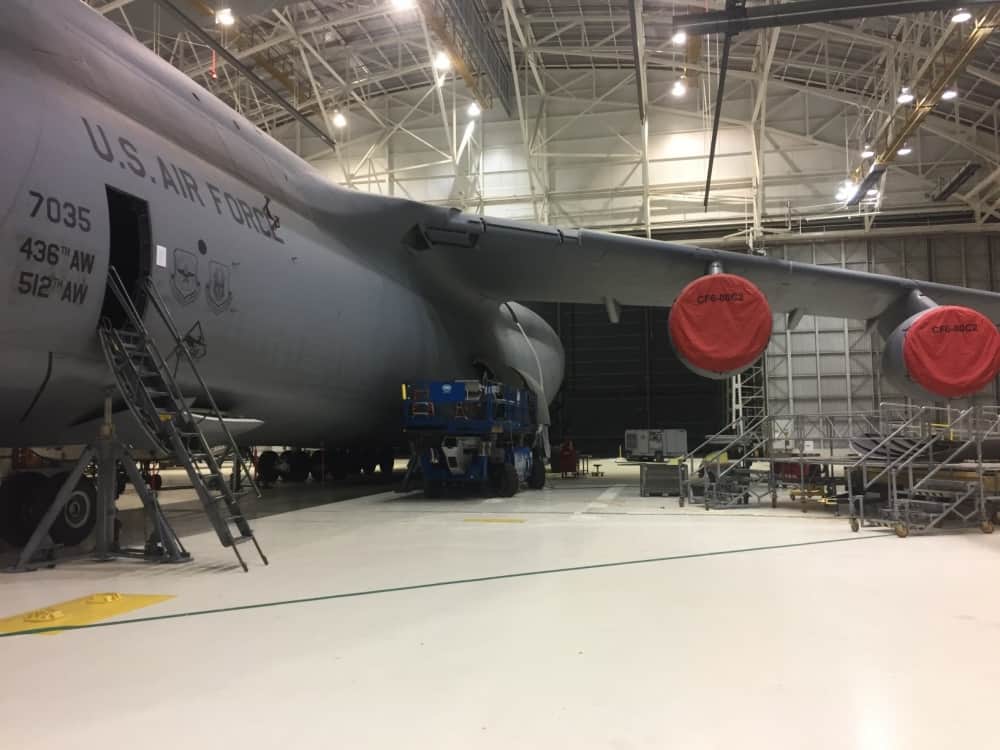
C-5 Galaxy Had Trouble When It First Released

12. Cracks were found in the wings of many of the C-5 shortly after entering service.
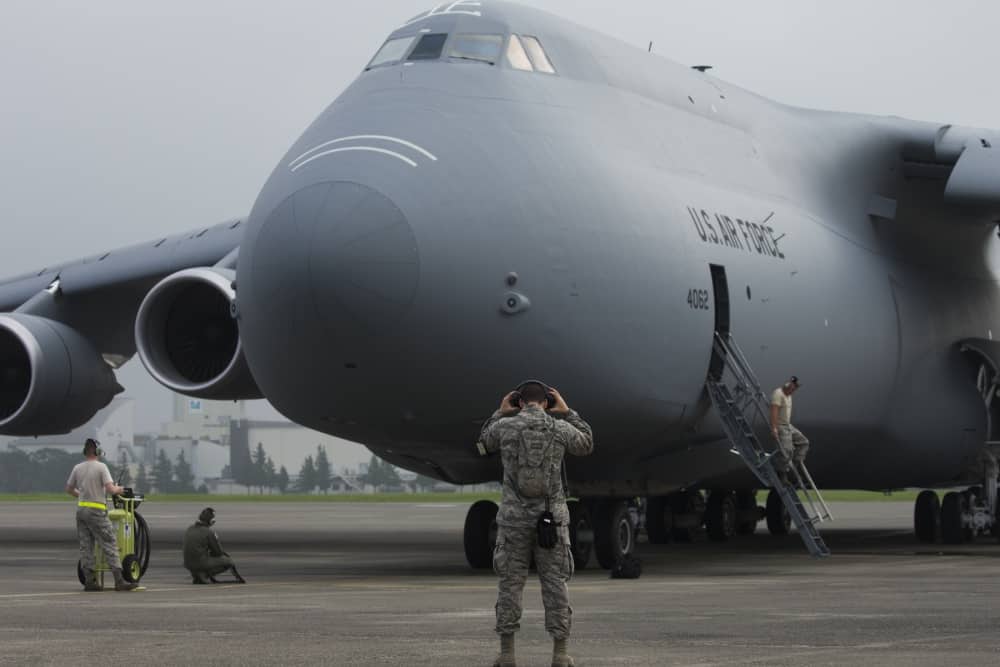
A $1.5 Billion Re-wing Program Began In 1976

11. A $1.5 billion re-wing program began in 1976 to restore full payload capability and service to C-5s.
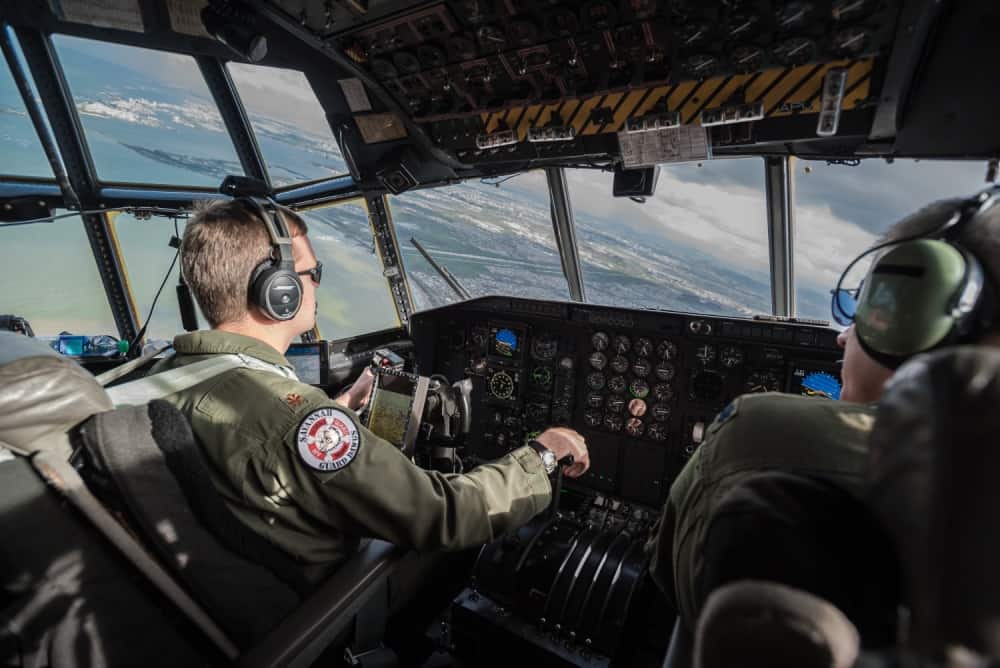
C-5 Galaxy Cost A lot

10. Their are multiple variants of the C-5 Galaxy with unit costs ranging from $100 million to $224 million.
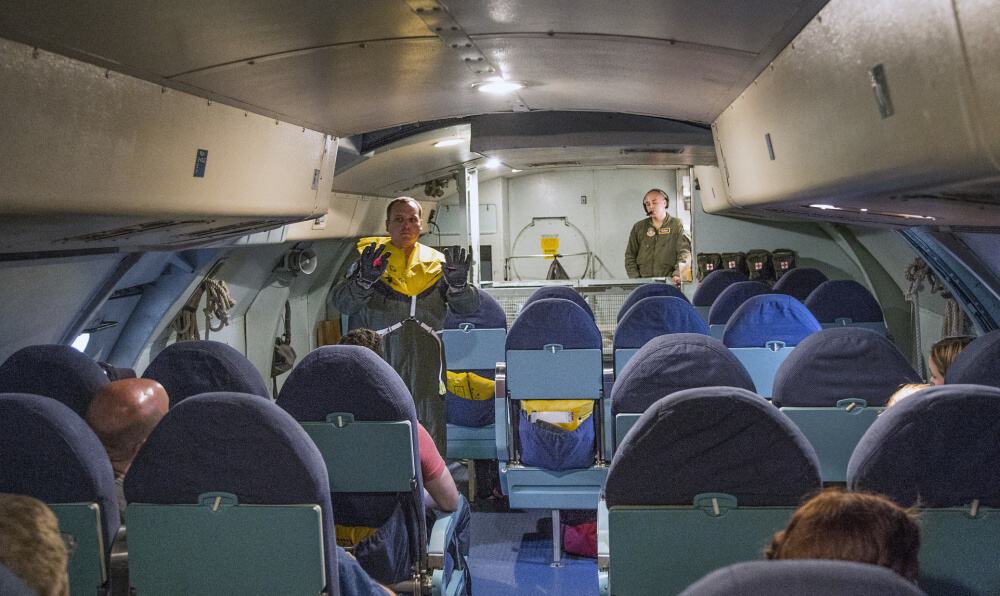
It Only Takes Seven People To Fly

9. The C-5 Galaxy has a typical crew of 7. Aircraft commander, pilot, two flight engineers, three loadmasters.
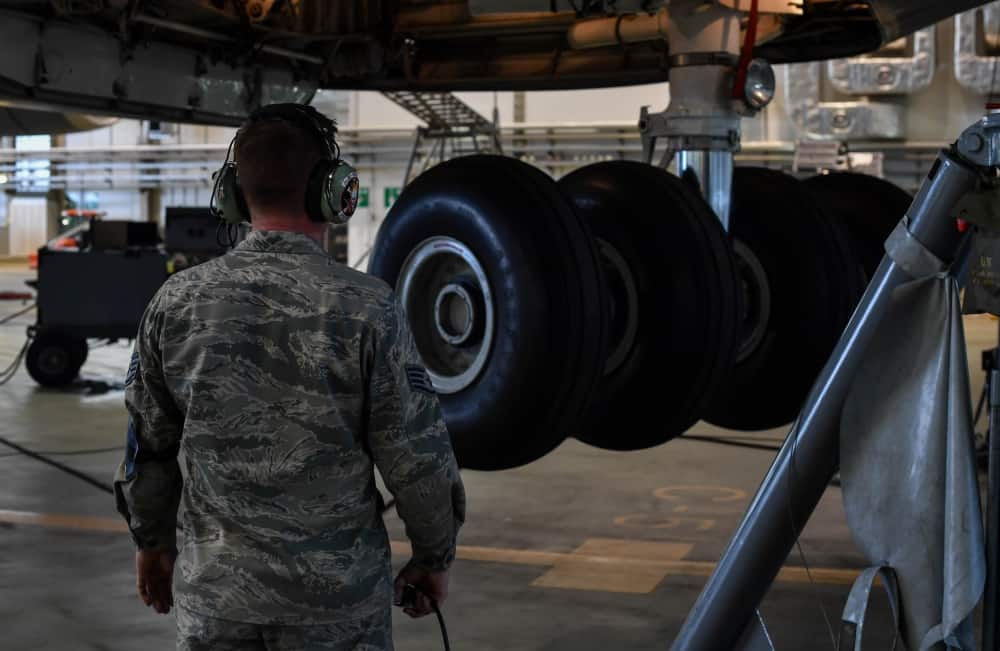
The C-5 Can Hold 75 Passengers

8. The C-5 upper deck has seating for 75 passengers.
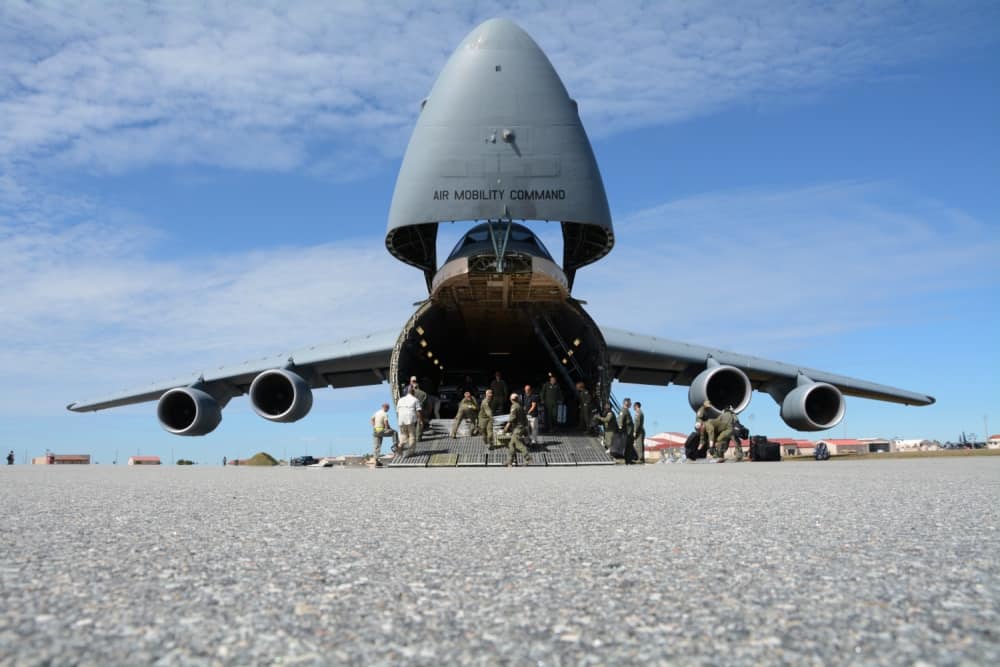
The Front Landing Gear Rotates Very Specifically

7. The front landing gear can rotate up to 20-degrees during take-off and landing and 90-degrees while landed.
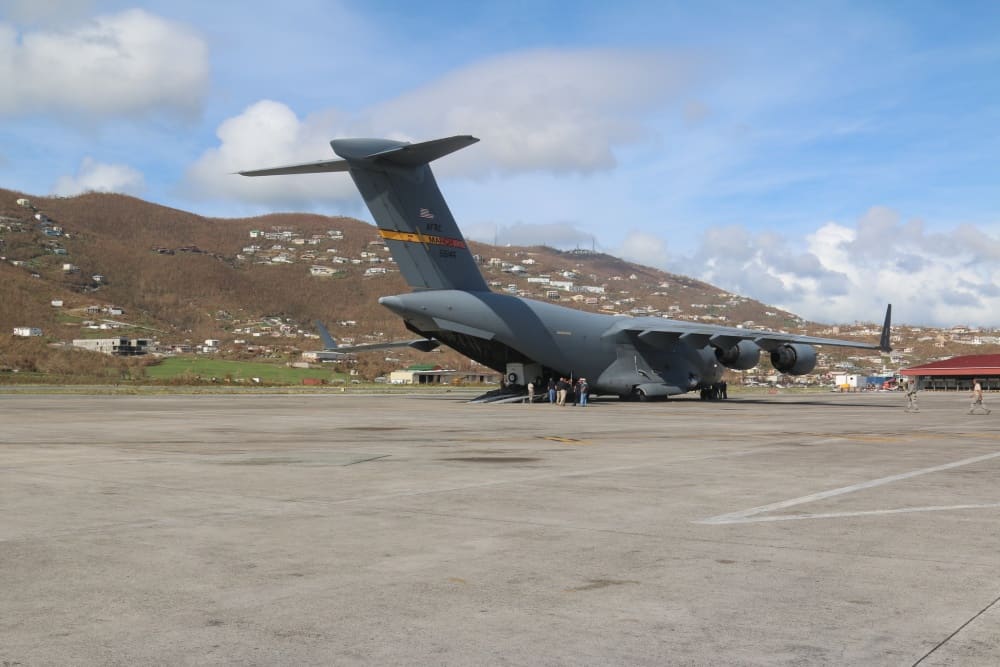
The Landing Gears Ran Into Problems

6. The Galaxy uses its front landing gears to kneel for loading but this has been the cause of numerous malfunctions.
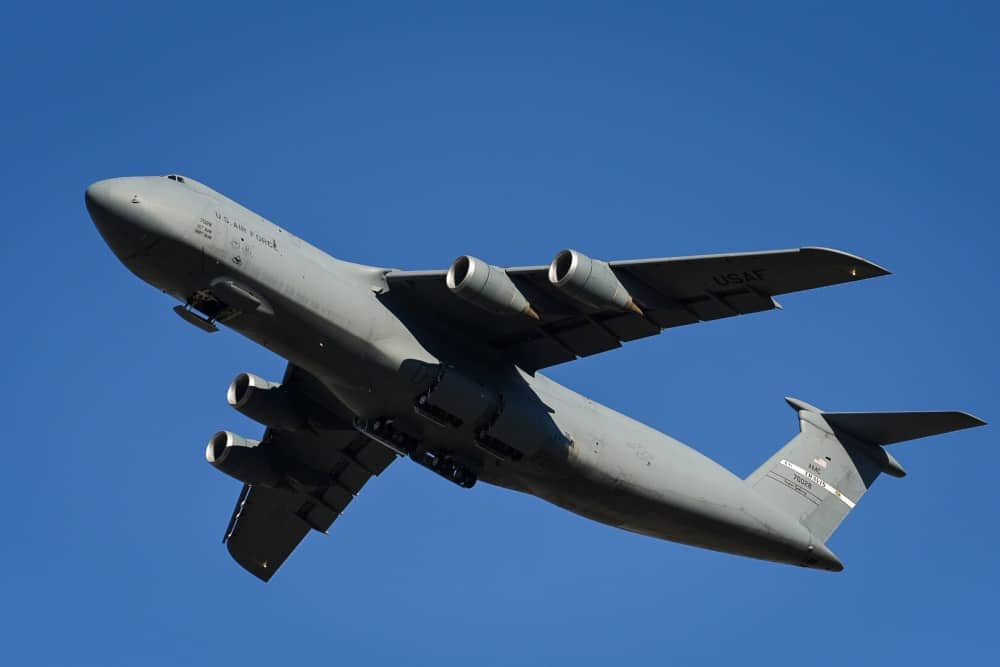
C-5 Is A Multirole Aircraft

5. The C-5 has played a major role in many disaster relief efforts including Hurricane Katrina, Irma and others.
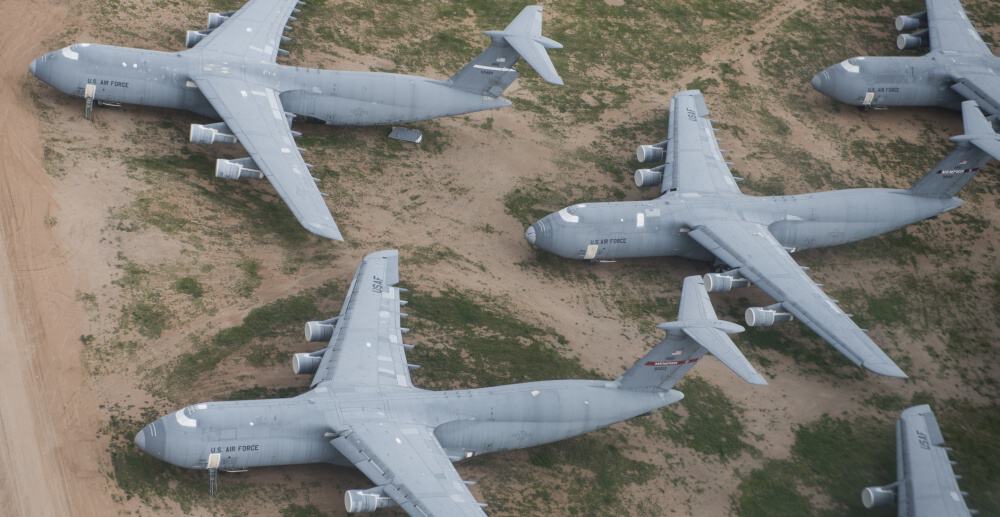
Only Three C-5 Galaxies Have Been Lost

4. Three C-5 Galaxy aircraft have been lost in crashes.
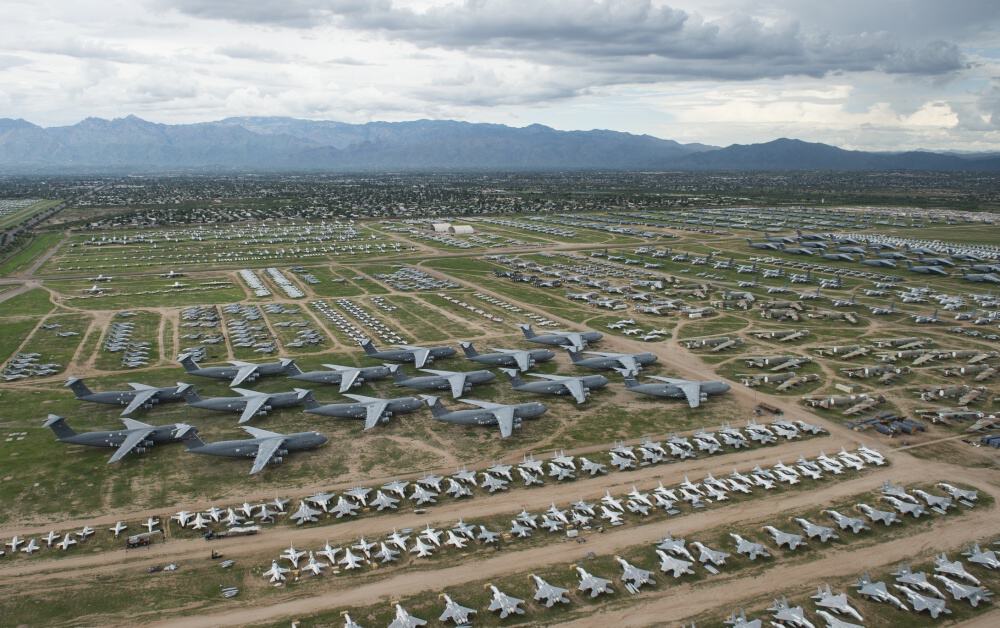
Two two class-A C-5 Have Been Lost

3. There have also been two class-A C-5 losses as a result of ground fire.
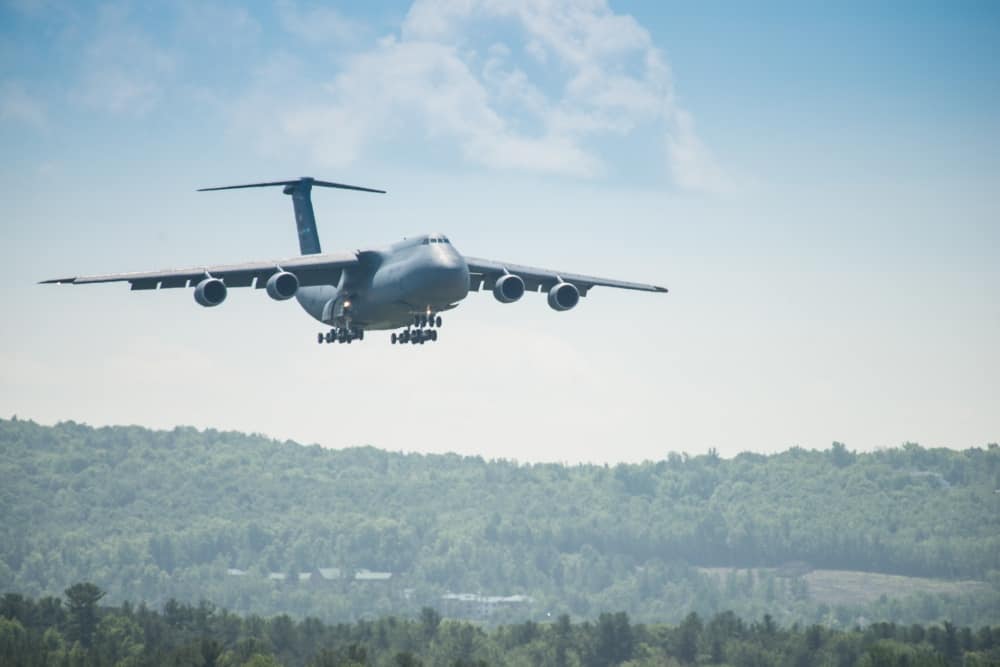
Many C-5 Galaxies Retried

2. Many C-5s have now been retired with others remaining in service.
The Air Force Will Use The C-5 Galaxy Until 2040

1. The United States Air Force spearheaded a Reliability Enhancement and Re-engining Program (RERP) to keep the C-5 in the air until 2040. Now checkout these Best Images of Aircraft Nose Art.
